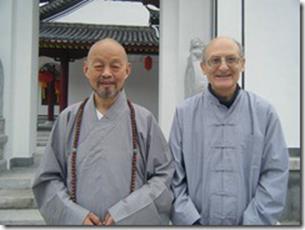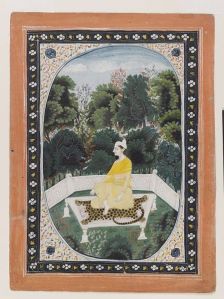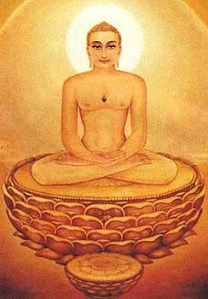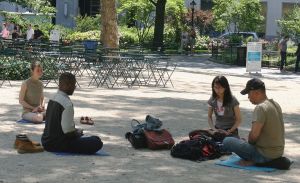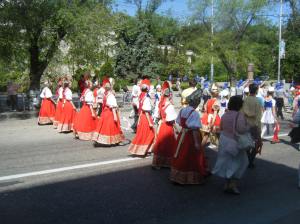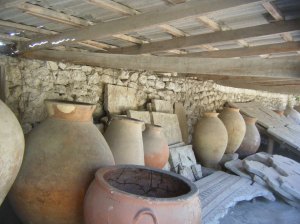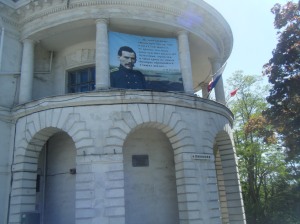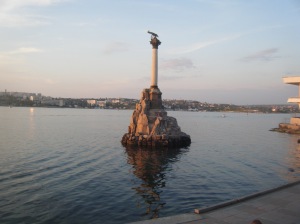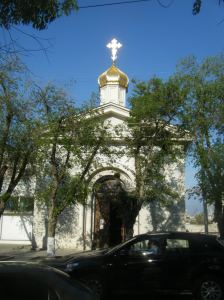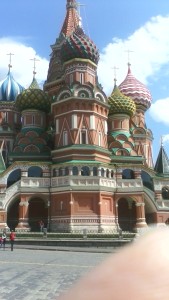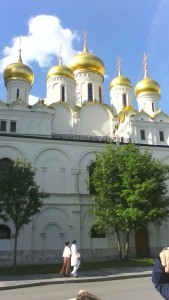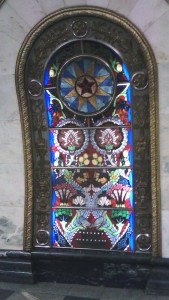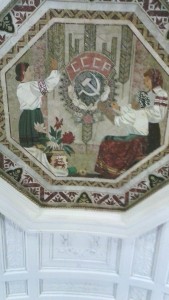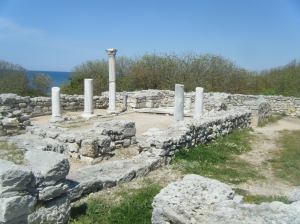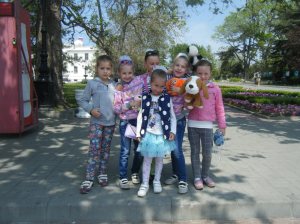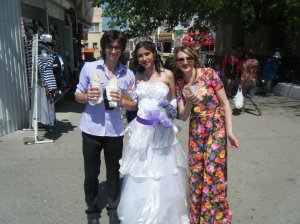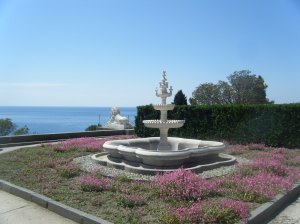No More Games, No More Delusions
I started this blog to have a record of my travels in Asia, starting in Thailand, then visiting Myanmar, Laos, China, India, Singapore. In 2015, I stopped traveling so much, but did get to Russia, which I have had interest in, due to ancestral ties, as well as the role that the Soviet Union played in world history, and now Russia.
In 2013, I started noticing events unfolding in Russia and especially in its former borderland area, which in Russian is called The Ukraine, or The Borderland. One of the first websites I found that talked about Russia was www.thesaker.is, which is run Andre Raevsky, aka “The Saker”, born in Switzerland, the son of a Dutch father and Russian mother. After a series of twists and turns, he ended up in the US.
He started his blog in 2007, as therapeutic exercise, so to speak. I discovered him in 2013, as the situation/crisis in Ukraine started to heat up, which he was starting to write about.

Hence his byline from his blog: Stop the Empire’s war on Russia
The Nazi Coup in Ukraine, 2013-2015
In 2013, disturbances broke out in the capital of Ukraine, Kiev, and by February 2014, it was turning seriously violent. What’s more, an audio tape of Victoria Nuland, a US State Department official and the US Ambassador surfaced in which it was obvious that they were planning a coup against the democratically elected government and President. Nuland, discussing the plan to proceed regardless of what the European Union wanted, notably said, “F*ck the EU!”
This was so outrageous that naive little me thought for sure that even Obama, whom I never trusted anyway, would fire her, at least for her unprofessional language. Instead, the coup happened, the President, Yanukovych, had to flee for his life, and the strong-armed thugs who enforced the coup, took over the Ukrainian Parliament, forced an illegal impeachment, and installed their own government, which was backed by such groups as the Azov Battalion, the Right Sector, Svoboda Party, and so on, all of whom had a visceral hatred for anything Russian.
The Russian language was outlawed, and soon there were pogroms, or violent ethnic riots against Russian friendly government officials, and any opponents. It reached the point in the mostly Russian city of Odessa, on May 2, 2014, a demonstration by Russian speaking opponents of the coup was not simply disrupted, but the demonstrators, who had taken refuge in the Labor Union building, were attacked, the building burned, with at least 42 people burned alive, or beaten or shot to death. To this date, no one has been prosecuted for it. Other attacks occurred throughout Ukraine, and hundreds were injured or killed.
Meanwhile, three regions of Russian speakers, the peninsula of Crimea, and two other areas, surrounding the cities of Lugansk and Donetsk were seriously threatened.
In the case of Crimea, the people who lived there held a referendum, to vote to leave Ukraine, and to request to rejoin Russia. Crimea had been part of Russia since 1783, and only switched to the Ukrainian Soviet Socialist Republic in 1954, a seemingly innocuous administrative act which had momentous consequences.
Crimea and specifically Sevastopol has major cultural and historical significance for Russia. It’s not just ‘any other place’. During WWII, or as the Russians call The Great Patriotic War, the Nazis invaded because the Soviets were attacking Romanian oil assets. The Soviets clung tenaciously to Crimea and especially to Sevastopol, the seaport. A movie was made about it, where Eleanor Roosevelt, the wife of FDR made friends with Lyudmilla Pavlichenko, a girl who became a sniper. Woody Guthrie the American folk singer, sang a song about her.
Here’s the trailer to the movie which I recommend…note the theme song, which is now used as background for the video about the Donbass defenders.
The Donetsk and the Lugansk People’s Republics declared independence. Indeed, with constant threats from Russia-hating gangs chanting “Hang Moskals (the derogatory equivalent of ‘nig*er’), they needed to physically defend themselves, not to mention to oppose the clearly undemocratic regime change, engineered by the US. As Obama arrogantly put it, “We brokered a transition”….as if events 5000 miles for US borders are any of the USA’s business.
One of the main Ukrainian politicians at the time, the so-called “Gas Queen” Yulia Timoshenko, said that ethnic Russians should be cleared out of the Donbass, that area containing Lugansk and Donetsk, with atomic weapons. These are not nice people. In 2014, serious attacks happened in the Donbass region.
Many Ukrainian army soldiers who came from this area, coalesced to defend themselves and their families, whom the Kiev regime called “terrorists”.
This video, made in 2015, shows scenes of actual fighting and the agony of innocent civilians victimized by Kiev. So please, stop thinking that the war broke out only in February, 2022.
If you think like that, you’re 8 years too late, and obviously just didn’t bother pay to attention.
The Minsk Agreements
One of the primary characteristics of the Kiev regime is its habitual lying. It claimed that the Russian military had invaded Ukraine in 2014. This is blatantly and provably untrue. There is no evidence of Russian military going into Ukraine, contrary to the lies of the Kiev regime. It is true that Russian volunteers unaffiliated with Moscow came to the Donbass people, who were under serious attack by the illegal Nazi backed coup regime. But the fighting and dying was done mostly by locals, many of whom had no military experience at all. Local members of the Ukrainian military deserted and got equipment from local armories. I personally met a woman soldier in 2015, who had returned to Crimea, and told me about her anticipating the coup, and defection to Crimea to defend it.
The Donbass defenders from the Donetsk and Lugansk regions achieved partial success. They lost the city of Slaviansk and much of the formal territory of those two regions, or Oblasts, but also inflicted heavy damage to the Kiev forces, resulting in an attempted truce, and a way forward, in order to resolve what was at that point considered a civil war. The Minsk Agreements of late 2014 and 2015 were supposed to allow for negotiations between Kiev and the breakaway regions, allow for regional autonomy within the borders of Ukraine.
An Ongoing Horror Show
The presence of Russian troops in Crimea, especially in the Russian held seaport city of Sevastopol, resulted in the peaceful change from Ukraine to Russian control. Ukraine soldiers were given the choice of switching to Russia’s military with full rank or peaceful withdrawal, to prevent bloodshed. Fortunately, there was no blood shed at all over Crimea.
However, violence, primarily shelling of mainly civilian areas of Donbass continued all during that time with varying degrees of intensity. Until recently, the provocative shelling by Kiev was met with restraint by the Donbass forces, whose soldiers were restricted from retaliating, in order to prevent a flareup from getting out of control. By 2021, though, it became more and more obvious that serious trouble was brewing.
Kiev stationed over 100,000 troops right near the contact line, and the newly elected President Zelensky made more and more openly hostile statements, such as disavowing the Minsk Agreements and demanding the return of Crimea. Which clearly, Crimean people totally opposed. If you were threatened by people who clearly hate you, and plan to attack your city or state, how would you feel?
By December 2021, in the face of increasingly threatening moves by the US and NATO, Russia proposed a series of steps to guarantee mutual security for Russia, the US and NATO. The US and NATO summarily and imperiously rejected them.
Starting in February, the number of shells being launched by the Kiev regime went from 40/day to as many as 1,400 a day.
Pleading to Prevent a Massacre
Russia had responded to an earlier buildup on the border of the Donbass with a buildup of its own, which apparently spooked the West, and things cooled down temporarily. But with Zelensky’s renewed calls to solve the situation violently, and with his announcement to develop nuclear weapons in violation of previous agreements, the Russian Parliament, or Duma, passed a resolution to support the people of the Donbass.
The position held by the Kremlin and President Putin, was that the integrity of the Ukraine should remain, although the Lugansk and Donetsk regions would have autonomy and guarantees to protect the Russian language. Russia at that point did not recognize them as independent of Ukraine. This was the basis of the Minsk Agreements.
However, recently, President Poroshenko, who was President at the time, and the Ukrainian signer of the Minsk Agreement stated that Kiev NEVER INTENDED TO FULFILL THE MINSK AGREEMENTS. They only signed them to buy time to rebuild the Ukrainian military to invade later.
Because of the increasingly threatening moves by Kiev and the dramatic increase in shelling on civilian areas, Putin held a conference with his Security Council. At that point the consensus was that Russia should recognize them as two independent countries. That allowed Russia to implement the ‘Responsibility to Protect’ Doctrine that the West has invoked when it has sent troops to other countries.
The Nuclear Option
After the USSR disbanded, Ukraine agreed to surrender its arsenal of nuclear weapons, but when Zelensky said that it was reneging on that agreement, this was a huge red flag–or red line–for Russia. The fact that Ukraine has several large nuclear power plants that certainly have materials capable of being made into nuclear weapons.
“This morning [18 March 2014] there was a meeting of the heads of the factions, and I spoke with Victor. Vitya says: what now to the eight million Russians who remained in Ukraine? They’re outcasts!” He says. “Damn, they should be shot from atomic weapons,” Tymoshenko immediately responds.”
https://en.topwar.ru/42243-timoshenko-hochet-mochit-kacapov-yadernym-oruzhiem.html
So, suppose Mexico had a violent coup, and a faction decided to ‘Get rid of the Gringos’ with nuclear weapons, what would the US do? Well, we can point to when the US slandered Iraq with a warning of a ‘mushroom cloud’ over WMD’s that didn’t exist.
So let’s get real. how would the USA respond in the event of a country right next door, with lots of nuclear materials, and high ranking politicians advocating the use of atomic weapons on 8 million people. What would the US do?
Massive Increase in Shelling
The OSCE is a supposedly independent monitoring group which, however, has shared a building with the notorious Azov battalion. Don’t worry about the Azov battalion, they’re not Nazis anymore because they recently removed Nazi insignia from their uniforms….a bad fashion statement you might say. Or bad PR.
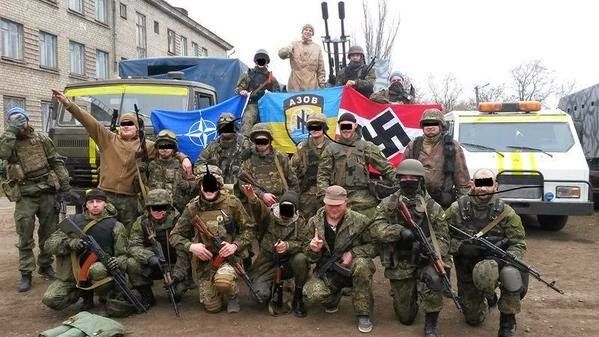
In any case, the OSCE reported a sharp increase in shelling in the Donbass. And in the face of this, many people fled to Russia to avoid getting shelled.
All Putin’s Fault
So the US stages a violent coup, which over the ensuing 8 years results in the killing of at least 14,000 people, numerous homes destroyed. (I myself met a family of refugees in Sevastopol in 2015 whose house was bombed). And there has been a massive buildup of NATO trained Ukraine troops and equipment.
But it’s all Russia’s fault.
At this point, can you see how you’re being set up? Set up for a war with Russia? With a country that was invaded by the West in 1812 under Napoleon, in 1914 by Germany, again by 14 countries who wanted to, in Winston Churchill’s words, “strangle Bolshevism in its cradle” after the Russian Revolution of November 1917. And then, equipped and financed by the West, invaded again in 1941 by Nazi Germany and its allies, such as Hungary, Romania, Italy as well as various fascist volunteers from Spain, France, Netherlands, etc.
The result was the loss of 27 million Soviet people, and a third of their country utterly decimated. There is no comparison with the US, which experienced a comparative pin prick at Pearl Harbor, and less than 500,000 dead. Put yourself in Russia’s shoes….15% of your people killed on a war on your land.
The American People Have NO IDEA what real war entails. It’s not a Hollywood Movie.
Replay of June, 1941
Following the end of the USSR, the Warsaw Pact was dissolved, that is, the Soviet Union itself as well as countries in the Soviet sphere of influence. NATO, presumably, had no more reason to exist since it no longer had an adversary. Russia, which succeeded the Soviet Union, drastically cut its military budget, essentially unilaterally disarmed and withdrew all its troops from it bases in Eastern Europe.
But NATO didn’t. It continued expanding up until now, with former Warsaw Pact and even former Soviet Republics, such as the Baltic States, joining NATO and espousing virulent Russophobia. From a defense point of view, Russia is in almost the same position now, surrounded by hostile countries, who discriminate against their Russian speaking populations. This all occurred in violation of agreements made at the so-called end of the Cold War…..for Russia it did end. But not for the US and NATO.
Several countries such as Turkey, Germany and soon, Poland and Romania will have nuclear weapons on their territory, minutes away from Moscow, breaking the agreement reached following the Cuban Missile Crisis.
This is where the world is now. The Bulletin of Atomic Scientists, which monitors the danger of Armageddon, shows its “Doomsday Clock” at the closest its ever been–100 Seconds to Midnight. The US maintains its unconditional right to use nuclear weapons offensively in a ‘First Strike’.
And what do the media tell you is really important? Johnny Depp’s marital problems.
Educate Yourself
There are many resources, both Western as well as Russian, that counteract the narrative that marches the sleeping public off to war, against both Russia and China.
Here are two films that are a ‘must see’ for Americans. Please note what the US made film says about Ukraine. Watch it, learn and see for yourself. See what Russia has had to go through, and compare that to any travails we in the US have had to suffer.
The first is The Battle of Russia, made in 1943 in the US. This was a time when the US had its priorities straight. Getting rid of Nazis.
The second film is quite recent, made by a Russian filmmaker. So, if your government has plans to nuke Russia, do you have the courtesy to at least hear a Russian point of view?
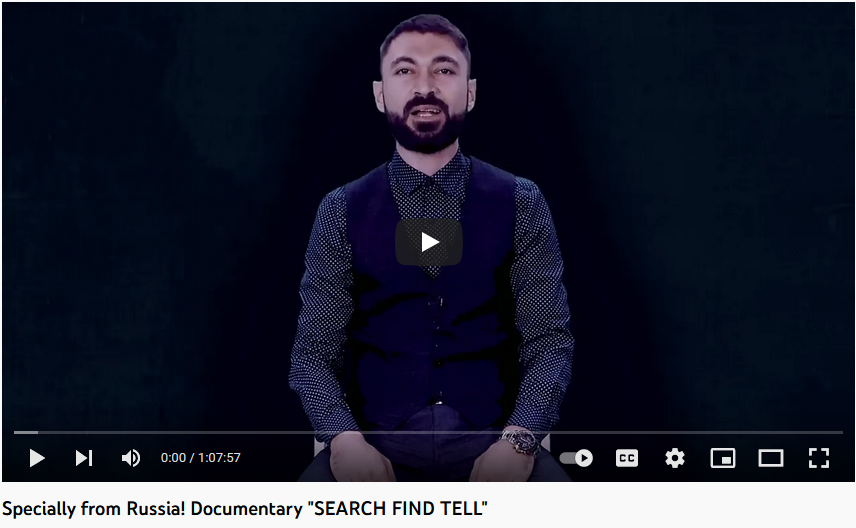
Is Nuclear War Possible?
The answer to that is “yes”. In earlier years, there was a peace movement that was not taken in by government propaganda, but since 1980’s anti-nuclear movement, which resulted in a major arms control treaty, the INF Treaty, (unilaterally cancelled by Trump), where is the outcry for some sanity, and opposition to the increaingly out of control US and NATO military expansion and aggression?
Filed under Travels in China
Why I Joined Friends of Crimea
My name is
My name is Eric Arnow
My Calling in Life
I am retired living Thailand. I have had several professions, my degree was in German literature. I wanted to understand how a country that produced such great thinkers as Kant, Nietzsche, Goethe, Schiller, Hesse, as well as great composers could have produced a regime that killed all but two members of my European family during WWII. I trained as a Zen monk for several years. There is a particular passage spoken 2500 years ago by a student of the Buddha:
Inner tangle outer tangle, this whole generation in a tangle, who will untangle the tangle. The Buddha replied, that person, ardent and sagacious, will untangle the tangle. So, you could say my life’s work is to better understand both myself, but also the broader society and ultimately geopolitics. Because of my Jewish background in Eastern Europe, I had a particular affinity for Russia. While I have had a couple of businesses, my true calling is in seeking truth.
When I visited Crimea
I visited Russia and Crimea in 2015. I had heard of trouble in 2014,and the coup fomented by Victoria Nuland and later realized that Joe Biden was directly overseeing it. Plus, 2015 was the 70th anniversary of Victory Day. The USSR’s victory was extremely important, the West was very unappreciative, so I wanted to pay my respects to Russia, and also, needed to see and verify for myself what was going on in Crimea, given the US narrative of Russia’s invasion and oppression.
Who I met in Crimea
I had several life changing meetings in Sevastopol, the major Black Sea port
- First, Malita, my hostess at the hostel I was staying at. By coincidence or fate, Regis interviewed her the following year. Malita told me a lot of historical background about Sevastopol and its role during the Soviet Union.
- Second, A refugee from Donetsk. He, his wife and son were staying at the hostel, too. Their house and that of his mother, had been bombed and destroyed by the Ukrainian thugs, who took over the government after the US sponsored coup. When a plane went overhead, he’d dive under the bed, so traumatized as he was by the attacks on him, a civilian
- Third, the librarian at the Leo Tolstoy Library. She showed me books in English, with notes by Mark Twain, which praised Russia for its support of the US during the US Civil War. The British and French wanted to keep the Confederacy for its slave system which they profited from. Tchaikovsky the great composer spoke of the bond of friendship he felt between the US and Russia. The irony of the US repudiating that friendship is quite painful to me.
- Fourth, a young woman, a soldier. She had been a soldier in the Ukrainian army in 2013. Her military base in Ukraine was raided in 2013. So she knew that trouble lay ahead. When the coup occurred, she deserted the Ukrainian army and headed back home to Sevastopol, to protect the city from fascist forces bent on attacking Sevastopol, just as they had attacked Donetsk and Lugansk.
- A polite Green Man. Walking around Sevastopol, I went to a hill, past a beautiful Church dedicated to Russian admirals. Moving on, I stopped in front of a very attractive, classic building, Greek style. I was standing there, admiring it for a few minutes, it seemed. At one point a young man in a green uniform came out of the building, and pointed to the letters on the building. With my smattering of Russian, I realized that I was loitering outside the FSB, Federal Security Bureau, or Russia’s FBI. After all the horror stories of ‘dangerous Russians invading and oppressing Crimea’, I had to smile to myself. “Amerikanski Spy!” You’d have thought they’d put a bag over my head and take me to the basement for ‘enhanced interrogation’. Instead, it was just a polite, “Please move on”.
My Impressions about Crimea
I saw a country that was in many ways suffering from neglect. Its buses were at least 30 years old, and many people were forced to sell what little they could grow or make, since the economy was in bad shape. However, after WWII, a number of very beautiful building were built. And of course, visiting Yalta, where FDR, Stalin and Roosevelt met towards the end of WWII was very meaningful. My chance to be in such a historic place. I also saw how beautiful Crimea is geographically, and when I visited the memorial to ‘The Charge of the Light Brigade’ of Crimean War and poetic fame, I could see how Crimea is a very valuable piece of real estate, and why many countries want it for themselves.
My belief about Crimea returning to Russia – referendum, not annexed or invaded
It was very clear, that the serious threat of neo Nazi gangs descending on Crimea caused the Russian speaking population to seek refuge with Russia. It was after the people voted overwhelmingly to leave Ukraine—after all, Khrushchev illegally attached Crimea to Ukraine, in a sort of shot gun marriage. And the Kiev government treated the people poorly, demanding they use Ukrainian language when their only language is Russian. Plus, Kiev did nothing economically for Crimea, basically treating it as an abused spouse.
So Crimean overwhelmingly petition Russia to leave its abusive spouse, and come back to Mother Russia. Fortunately, Russia accepted the request. Also, Crimeans begged the Russian troops already at the port of Sevastopol to protect them from Kiev’s marauders.
What did you learn about Sanctions
The first sanctions, I think, were in response to the slanderous allegation that Russia shot down a civilian airliner during the hostilities in the Donbass region. My own research indicated that Ukraine shot it down, and blamed Russia. And of course, because the US felt sour grapes for ‘losing Crimea’ after the coup, it instituted sanctions against Crimea. While there, my credit card was useless, so I barely had enough cash to pay for my expenses there. Sanctions are a replay of siege warfare, similar to besieging a city during the middle ages, so as to starve the people into submission. That is standing operating procedure for US foreign policy.
Why I joined Friends of Crimea Club USA
We citizens of the world, and especially of Western countries that have turned reality on its head, blaming their victim, in this case, Russia and Crimea, have a special responsibility to, as it’s said, speak truth to power. Most Americans where my family lives, have been lied to about Russia. One of my dearest friends insisted that he knows what’s going on in Russia. So I said to him, “Are you going to believe CNN, NPR and the New York Times, or me, your trusted friend who actually went to Crimea to see for myself?”
We are in a war, an information war, an economic war, which could become a real serious war that threatens life on the planet. The only antidote this mental illness in the West, is Reality Therapy, We need to tell the truth about Crimea. That’s why I joined. We need citizen witnesses and supporters of Crimea to stand up to the lies that are constantly told.
Filed under Travels in China
Presentation to Monks in Thailand–an overview of my 2013 Pilgrimage to China
Introduction
On January 21st, 2014, I gave a talk to a group of monks at Wat Suan Dok, in Chiang Mai, Thailand. They are students at a University associated with the temple, Wat Suan Dok. These monks come from Nepal, Cambodia, Myanmar, Thailand, Lao. After I gave my presentation, there was a question and answer session for about an hour. Here are some of the thoughts I expressed at the meeting.
First, I told them that I had studied basic traditional Buddhism at the San Francisco Zen Center, and had in recent years practiced several forms of Vipassana, at Wat Umong, Wat Doi Suthep, Wat Chom Thong (in Thailand). Practiced the Goenka Vipassana method and done three ten day retreats as well as spent one month at The International Meditation Center in Yangon, U Ba Khin’s center, where Goenka himself trained.
I had also learned the method taught by the forest monks, breathing in ‘Pu…”, breathing out…”Dho” at Wat Tham Wua, in Mae Hong Son Province. I had studied and practiced Zen Buddhism in the USA. The primary difference in POV of Zen vs Thai—Bodhisattva vs Arhat. Bodhisattvas put off reaching liberation, “Nirvana”, while Arhats in the Theravada tradition have attained Nirvana (or in Pali Nibbana) in this lifetime.
My opinion is that the issue is almost moot. Both practices involve meditation, knowledge of the 4 Noble Truths, the Eigthfold Path, 5 Skhandas, understanding of the how our senses work, examination of mental and emotional make up and so on.
In fact, maybe only 5% or less of human beings even make any attempt at all to come to grips with their delusions and attachments. Self cultivation is very hard work. To experience the Dharma directly is extremely rare, so whether one chooses Mahayana or Theravada, and has some insight is a huge accomplishment in itself. Why China?—early influences.
My First Trip to China in 2007
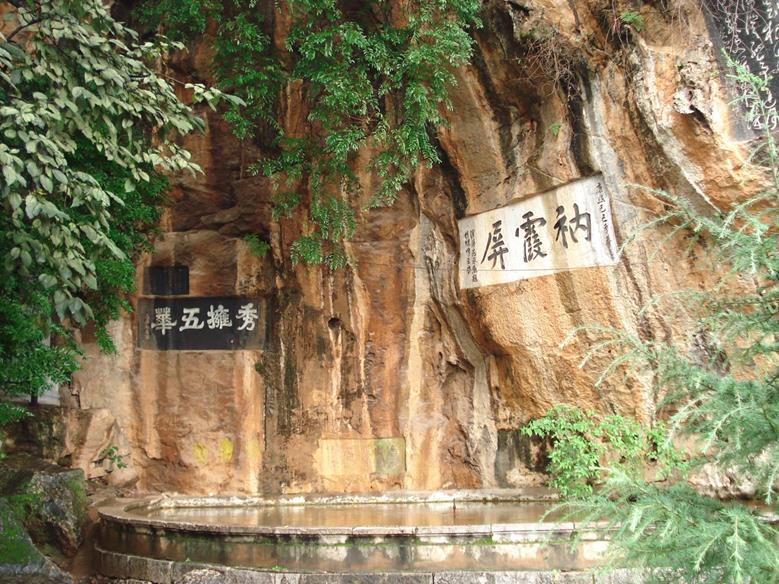
Cave temple in Kunming, Yunnan Province China

My first two Chinese friends, Xiao Jun Jie, left, and Meioguang Fashi (Fashi is Chinese for Master Teacher, literally Dharma Master)
Having studied Zen for many years in America, I felt the need to reconnect and understand the context of China and the development of Zen.
Here is a picture of a cave in a temple in Kunming, Yunnan Province, on my first trip.How I came to China—Dali, Meioguang Fashi.
I met Meioguang Fashi ‘by accident’ in Dali. He invited me to travel with him and his friend Xiaojunjie, and later, we all went to Xiamen, his home town.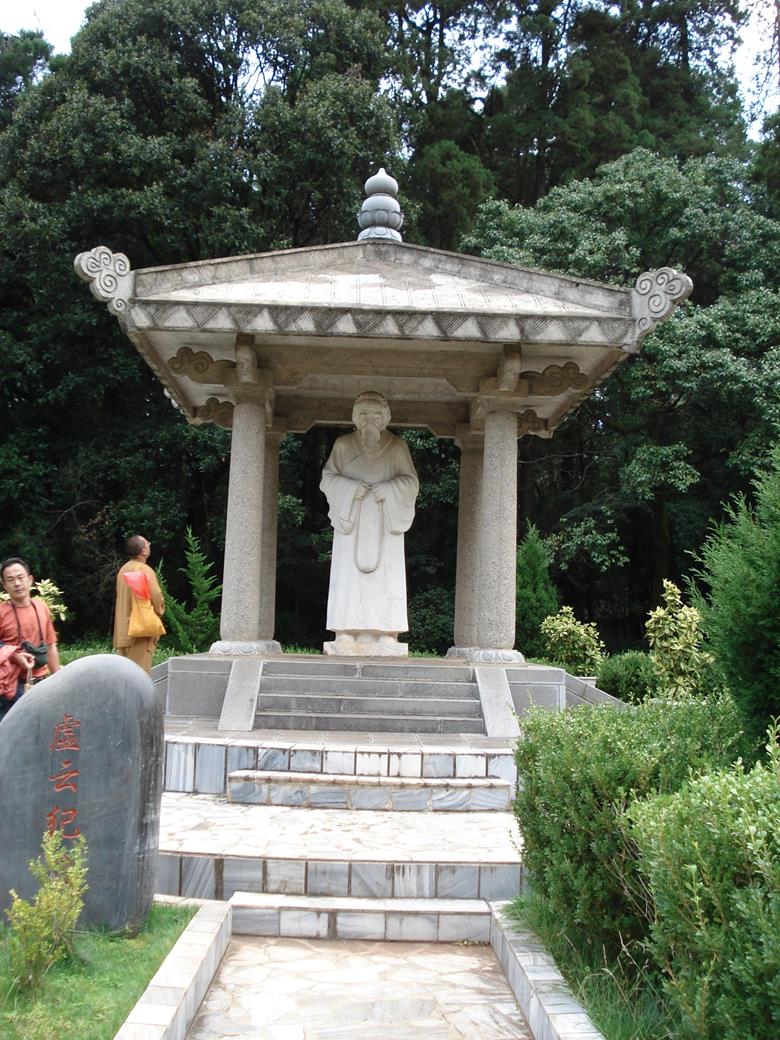
A statue of Xu Yun, the legendary monk of the 20th century, whose bio I had read 30 years earlier.
Meioguang Fashi, is both an expert in Chinese history and art, as well as a master artist and calligrapher. Here he is in his room and studio in a small city outside of Xiamen.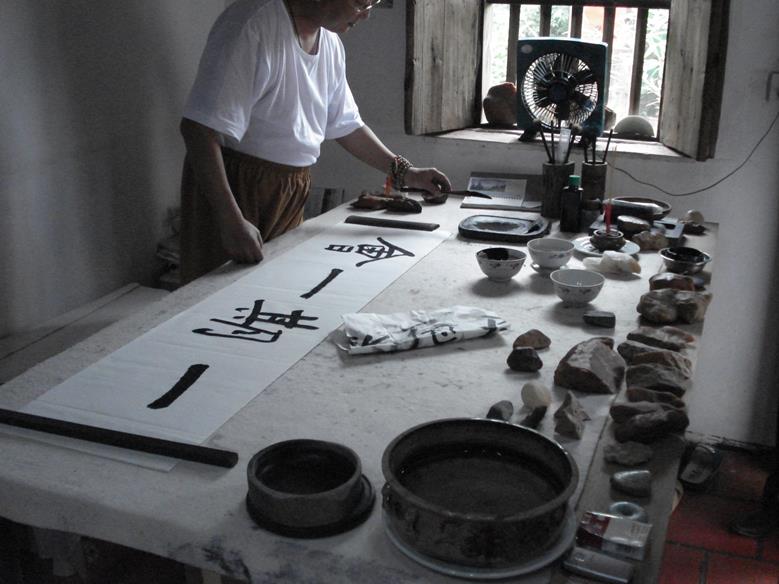
Meeting Meioguang in Dali, 2007
Meeting Meioguang in Dali, 2007. In August, 2007, I got it into my head to go to China. I had studied Zen Buddhism, which had its roots in China, but had been put off going there, due to my concerns with the language barrier. But my American friend, Paco, had traveled to Yunnan province, in Southwest China, almost directly due north of Chiang Mai. A quick airplane trip to Yunnan’s capital, Kunming got me there.
Plus, I went online and found a college student who spoke English, who would be my guide. So I landed in Kunming, and met Faye, my student guide. For about three days, while she attempted to teach me Chinese, she shepherded me from my hotel to sites in Kunming, and to her favorite restaurant, MacDonald’s which is considered to be way cool.
She taught herself English, and was a diligent student. She came from a Muslim family in Yunnan, but has left that all behind, now she is a modern young woman making her way in the world.
Next, I took a bus with Paco and his girlfriend, Li, whom he subsequently married, to Dali. Dali is a small Himalayan foothills town. Wandering around Dali, I found many street vendors. One was selling silver dollar coins. “Please buy my coins, I need to make a sale to day to feed my family. “
She was selling the coins for the US equivalent of $6. But silver dollar coins in the US were selling for $12 at that time. I felt guilty buying about 10 coins, knowing I would make an immediate profit, since the woman lived in this backwater, and didn’t know the real price of silver.
Then I bought a new backpack. I knew that you had to bargain with these people, so when the shop owner asked for 180 rmb, about $25, I said, “60”. She said, “Ok, how about 120 rmb?” I said, “60”. She rolled her eyes and said, “90”. I said, “60”. She said, “You Westerners drive a hard bargain,” and agreed to charge 60 rmb. I proudly went and met up with Paco and Li.
With Paco translating (he spoke a little Chinese at the time), she said, “The bag is only worth 50 rmb, and the silver coins are fakes”. So I went back to the coin seller’s table and confronted her. “You sold me fake coins!” “No, they are real!” She clinked them together, and they had a nice ring. So I went to some other silver shops. I said, “I want to sell my silver coins” How about buying them for $6? They said, No. $5? No, $4, No. …$1…no. They were all fakes. I was pissed.
I went looking for the silver lady, and when she saw me again, she ran away. In fact, what I was soon to discover, was something far more precious. Buying silver coins wasn’t my reason to be in China, anyway, I was looking for Buddhist monks to talk to. Wandering around the streets of Dali by myself, I was repeating a mantra, “where’s a monk, where’s a monk….?”
A Chinese fellow approached me outside one of Dali’s many antique shops and introduced himself. “Have you eaten yet”—the standard way of greeting in China, he asked. There was a fellow in the antique shop with a shaved head, wearing clothes that looked like a monk would wear. “Is that fellow there a monk?” I asked.
Indeed he was, and Xiaojunjie, my new friend, took me to lunch, followed by wandering around through the many art and antique shops with Meioguang Fashi. (Fashi is Chinese for Master of Dharma, the Buddhist teachings).
Meeting Meioguang Fashi
We ended up talking for 8 hours straight, debating various points of Buddhism, and having a wide ranging highly stimulating discussion, like I had never had before. What is the meaning of the Heart Sutra? What are the wellsprings of Chinese culture? What about all the famous Zen stories, and maybe most important, is there authentic Zen Practice going on in China? The next day, Xiaojunjie invited me to travel with them to Jizu Shan, a 10,000 foot high mountain.
We got there and at the foot of the mountain was a 15 foot high statue of Xu Yun, the legendary monk of the 20th Century, who lived to be 120 years old. We’ll be seeing more of Xu Yun later. But just to give a sample, it’s said that one time, he decided to boil some potatoes. While they were cooking, Xu Yun did a little meditation. Some friends came by and looked in the pot, arousing him from his meditation. However, the potatoes were moldy. He had probably been sitting for at least a week, lost in his meditation!
I’d read his biography 30 years earlier, and was in awe of his life as a monk. Seeing his statue, I felt like I was reconnecting with an old and dear friend. To return to Dali from Jizu Shan, Meioguang hired an unregistered taxi. The driver was in a hurry to get back, so he drove like crazy—the double yellow line in the middle of the road meant nothing to him. He played chicken with the oncoming cars, and would swerve back into the correct lane again and again.
At one point, I finally said to Xiaojunjie, “This guy is driving too fast, and too dangerously. Tell him to SLOW DOWN.”, but Xiaojunjie just said, don’t worry.
Indeed he wasn’t the only driver driving like that, so Xiaojunjie must have been used to it. Then, on one of the curves in the mountain road, we passed a minivan on the road bank. Upside down. I just thought, thinking of our Native American Ancestors maxim before going into battle,“it’s a good day to die.” After Jizu Shan, as Meioguang Fashi , Xiaojunjie and I proceeded on our trip, we found how much I had in common with them.
They had encouraged me to come to Xiamen, study Chinese, and spend more time with Chinese, who had lost contact with the tradition of Chan, or Zen Buddhism. They had planned to go to Shanghai, and I had planned to go exploring more of Yunnan Province. But, when I told them that I thought it might be a good idea for me to visit Xiamen and check it out, the next day, they told me that they had decided to cancel their trip to Shanghai, and take me to Xiamen. So in the summer of 2007, my life took an unexpected turn—to Xiamen.
Off to Xiamen, a City in the South East
They booked three first class train tickets for the three day trip, and off we went. Meioguang Fashi lives in a suburb of Xiamen. In 2007, there was hardly even a road there, and his friends and supporters drove beat up old cars, if they owned cars at all. Now, many of his friends drive new ones. So Xiamen has come into its own, and the road to his home town is now a modern 4 lane highway.
Xiamen is one of the unique cities in Chinese history. Originally called, Amoy, it was one of the first cities that European traders found in the 15th Century. Most people think of cities like, Beijing, Shanghai, Hong Kong or Canton (now Guangzhou) when they think of China, but in fact, Xiamen was one of the very first ports where traders made their fortunes. As Bill Brown writes in his website, amoymagic, the USA would not have happened were it not for Xiamen.
It turns out that the tea that was thrown overboard at the Boston Tea Party, came for Xiamen’s Fujian Province, and was doubtless shipped from Xiamen before being unceremoniously dumped into Boston Harbor. However, as Brown notes, the Brits got their revenge, when in 1843, they attacked Xiamen, as part of the First Opium War. As a result, a small island off the main island of Xiamen, called Gulangyu, was ceded by the Chinese Emperor, and several foreign missions set up, mainly from Europe, but also Japan.
Gulangyu is one of China’s famous tourist spots, where many couples planning to marry have their wedding pictures taken. It is also the site of a piano museum, with perhaps 20 pianos many 200 years old or more, a virtual history of the piano as it developed over time. However, Gulangyu has a darker side. It was from there that the British and later other missions colonized and exploited China.
Did You Know How England Became Rich?
China suffered massively from the forced importation of opium, primarily by the British. At one point, fully one fourth of China’s population was addicted to opium, and there was talk of the country committing national suicide as it sank into poverty and squalor. Can you, dear reader, ask yourself what would the USA or Europe be like, if they had 50 or 100 million heroin or meth addicts? As a post Opium War treaty port forced on China, Xiamen was a key entry point for England’s “free trade”, which had to include opium.
The British, for their part, praised the benefits of opium, while outlawing it in England. At one point even the British Parliament was going to stop the opium trade, due to the pleading of the Emperor of China to stop the forced opium trade. But in the name of ‘Free Trade’,– Parliament was dissolved so that a second opium war could further destroy Chinese society for the benefit of British drug barons.
It might also be of interest that both Presidents Bush were members of the Skull and Bones Yale Secret Society. How secret? Both George Bush and John Kerry, while running for president in 2004, when asked to explain this organization, said “we can’t talk about it”. However, independent researchers have discovered that the founder of Skull and Bones, William Russell was the key figure in the US side of the opium trade in China.
George “Poppy” Bush, Dubya Bush’s Dad
Years later, another Skull and Bonesman, George Bush the elder, who has a nickname Poppy, just a coincidence no doubt.. was Vice President. He was in charge of the war on drugs!
Bo Gritz, a great hero of the Vietnam war, had searched for POW’s in Asia, and met the notorious Burmese drug lord, Kuhn Sah. This was in the notorious Golden Triangle where Thailand, Burma and Laos borders converged. Kuhn Sah offered to stop selling heroin if the US paid him off. Bush, said, ‘leave it alone, Bo, we don’t want you to get hurt’. Years later, the opium growing moved to Afghanistan.
However, the Taliban had wiped out opium production in Afghanistan by 2001. Then, his son George Jr. kicked the Taliban out of power after 911. Afghanistan’s opium poppy production has soared under US occupation. The Opium Wars have never ended, they’ve just changed venues. The main characters in the multigenerational gangster drug trade have stayed pretty much the same.
But fortunately, China has had a reprieve. Xiamen has had its ups and downs, along with the rest of China. The Japanese invaded China in the 1930’s resulting in the deaths of at least 20 million people.
Xiamen was occupied by the Japanese from 1938 until 1945. When the Japanese were finally forced out, the Chinese Civil War between the Communists and the Goumintang ensued. Chiang Kai Shek, Mao’s opposite, was forced to flee the Mainland, and go to Taiwan, which had been a province of China for centuries, although occupied successively by Dutch in the 17th Century and the Japanese in the 20th Century. As a result, for decades, Xiamen, was under the gun, so to speak of Taiwan.
On the other hand, one island only an hour’s boat ride away from Xiamen is Jinmen Island, which held out against the Communists in 1949. This island, otherwise known as Quemoy, was a subject of debate between Kennedy and Nixon in the 1960 election. The question being, should the US attack China if it attacked Quemoy. Fortunately, the Communists gave up the idea of taking it back. Lucky for us foreigners,we can now renew our visas to China by hopping on a ferry for the one hour ride out of China and onto Jinmen.
Relations between Taiwan and China have eased over the years, [Until recently, updated in 2020, with the US selling Taiwan US weapons, violating the US”s own agreement on recognizing the People’s Republic of China] and as a result, the Communist government has been more willing to invest in Xiamen. Due to its status as a special economic zone, its economy has boomed. Since I was first invited by my monk friend to come to Xiamen, the city has developed significantly, and serves as my home base for my forays deep into China.
Here, in Zhong Shan park, one of several fine parks in Xiamen, a group of musicians play using traditional Chinese string and flute instruments.
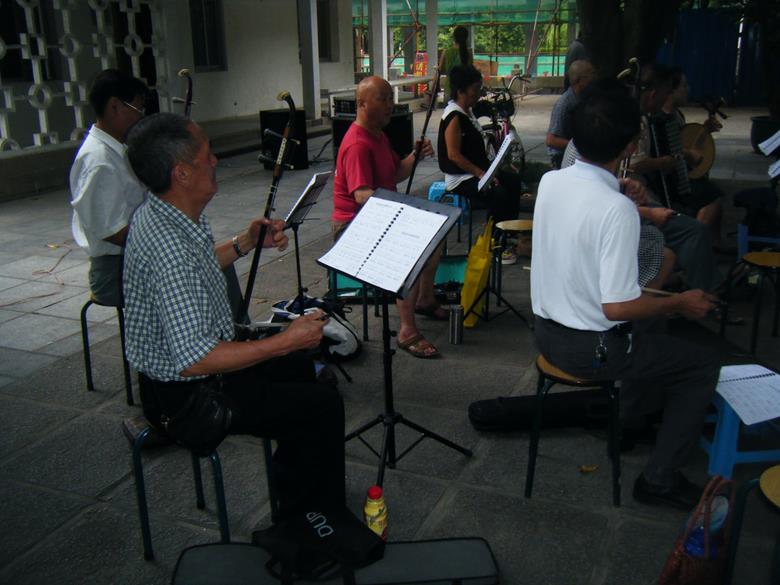

Here is a Burmese style reclining Buddha.
Every fall, there is an international Buddhist trade fair, where all things Buddhist are exhibited and sold. Here is a Burmese style reclining Buddha. You can also buy bells, drums of all sizes, hand written Chinese Buddhist texts, incense, stonework, statues, art work and so on.
Staying at Tong Bo Yan Si (translation: Monk’s Copper Bowl Temple)
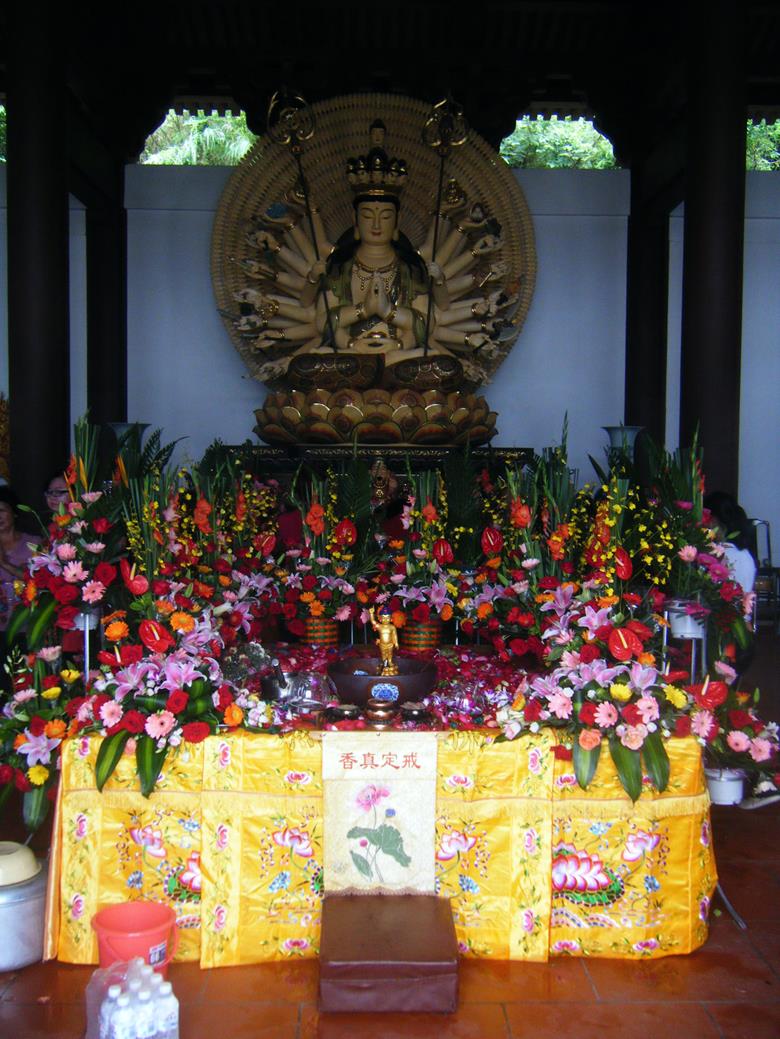
An Old Zen Saying is that Kuan Yin, or Bodhisattva Avalokiteshvara has 1000 Arms ( to help the afflicted)Here’s an example of such an image
I’ve written about previous stays at temples in China, and had returned in March 2013, for a two month stay at Tong Bo Yan Si. While there, the traditional Buddha’s Birthday celebration took place.
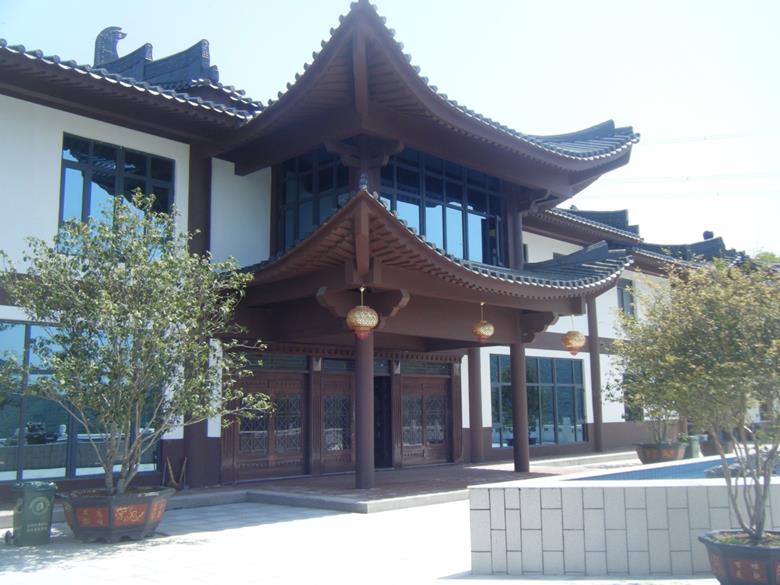
Entrance to the Dharma Hall at Tong Bo Yan Si
Here is a picture of the Baby Buddha, set up under the statue of the 1000 armed Kuan Yin.
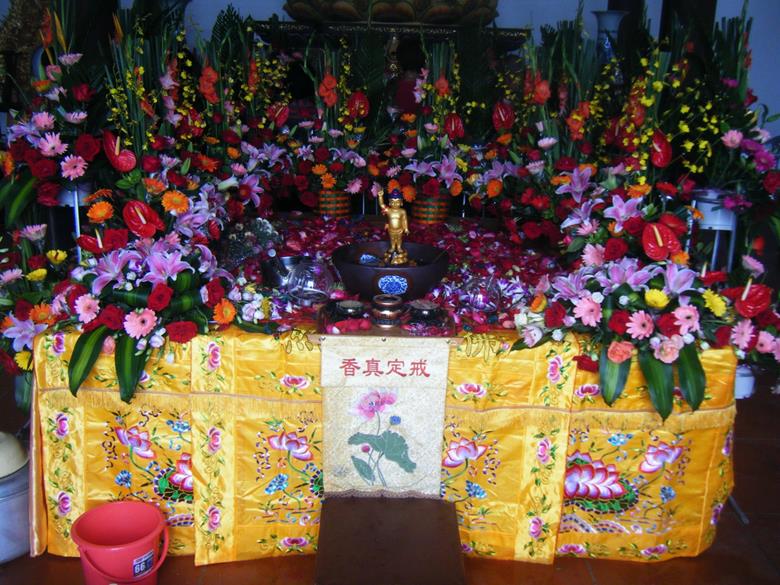
1000 Armed Kuan Yin
Tong Bo Yan Si was the place where Jing Wu, the abbot of the temple, stayed when he had finished his three year solitary retreat at the famous training temple, Bailin Si, the Tang Dynasty monk, Zhao Zhou’s (Japanese: Joshu) temple, rebuilt in the 1980’s. The picture here shows me at the entrance to a small cave, where hermits sometimes lived. The original Tong Bo Yan Si was reportedly 800 years old. Jing Wu was discovered by some lay people and his vow to start his own temple was realized in 2007. 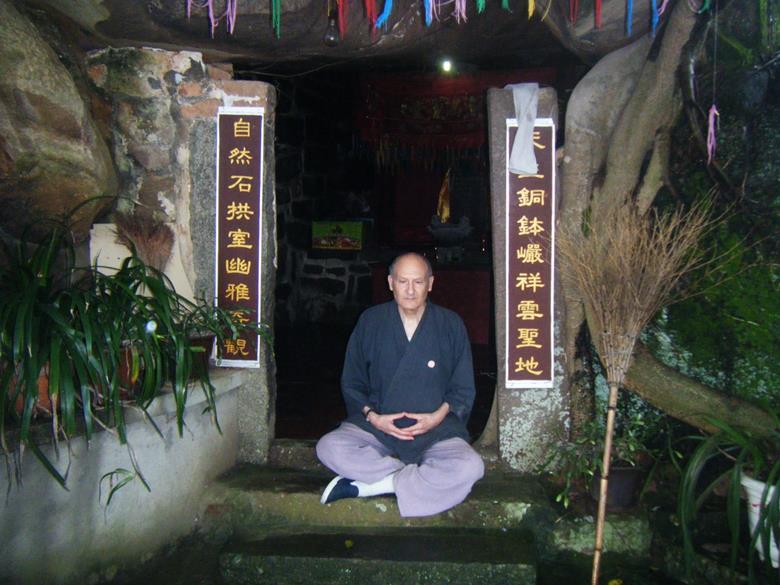
Travel to Xue Feng’s Temple
Following my stay at Tong Bo Yan Si, I went with some Chinese friends to the temple of Xue Feng, about a 4 hour drive from Xiamen, in western Fujian Province. I have special affinity because Xue Feng (822-908) practiced meditation diligently for 25 years. While traveling with his monk friend, Yan Tou, his brother monk finally blurted out to him, “Haven’t you heard that, that what comes through the front gate is not the family treasure!” Haven’t you heard that what comes in through the front gate (your senses) is not Your Family Treasure? Here is a statue of the old man himself.

Statue of Master Xue Feng (Seppo)
The best meditator at Xue Feng Si. When I asked him for some truth of Buddhism, he said something, which I didn’t understand, but then, just laughed, said, Meditate More!, turned and walked away.

Here, Guoji, my monk friend, and I stand on the ‘highway’ between Fujian and Jiangxi Province.
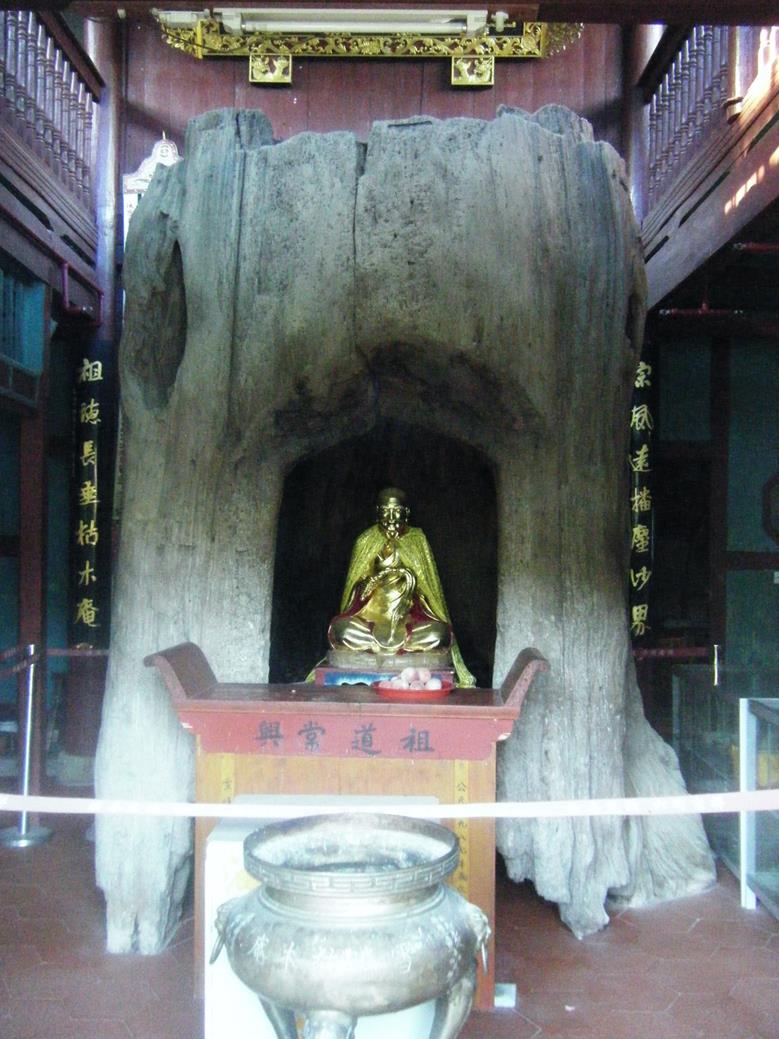
After Xue Feng had his insight, he left Jiangxi province, and went to Fujian. He took up sitting in this old semipetrified tree trunk. The building you see was built around it only recently. A statue of him sits inside.
Of course, Chan people (Chan is the Chinese pronunciation of Zen) have great respect for Arhats, and what you see here, is the footprint of a flying arhat, in the side of the large boulder. Some of the old Buddhist literature describes some feats of Arhats or of others who have very high powers of Samatha or Concentration Meditation. (Walking on water being another)
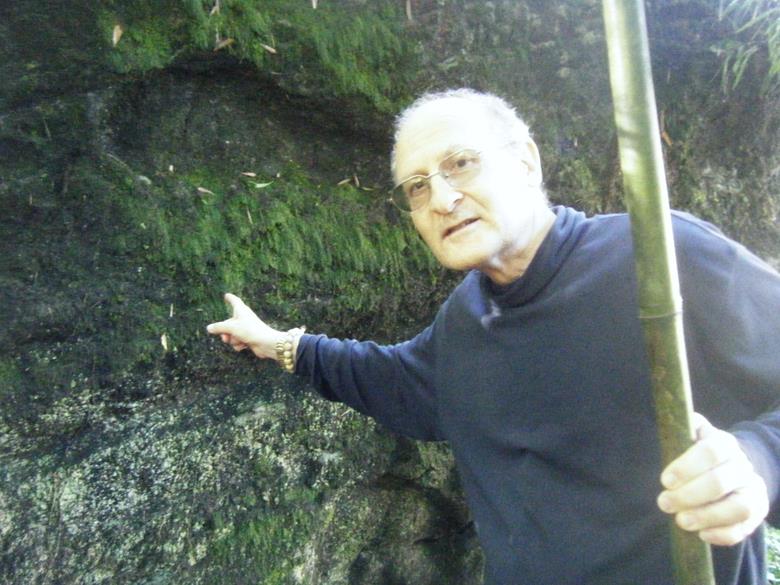
Traveling into “Zen Country”
From XueFeng Si, I went on the main part of the trip, to Jiangxi Province. First, I went to the capital of Jiangxi, but no one knew anything about where these temples are located. Fortunately, a friend I had met at a temple two years earlier, gave me directions to my next stop, Yang Shan Xi Yin Si.It took about two days to get here, and when I arrived, there was a Buddhist summer camp. These are some of the campers who stayed at the temple for a week, learning to meditate and study Buddhism.
This is a flat bell outside the kitchen where they cook meals. You see this type of bell everywhere in China and even in Japan. My home temple in the US has one like this, too.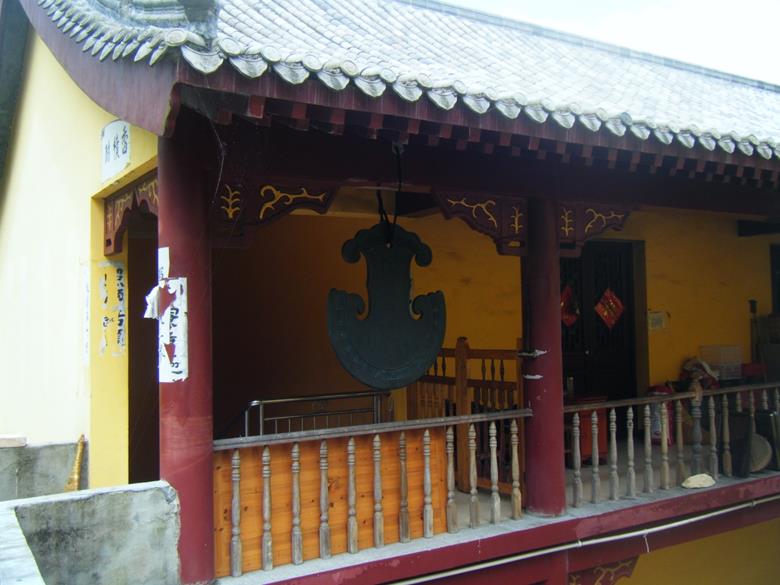
Yangshan was one of the most important early teachers of Chan. His school was one of the five schools of Chan, and this bell, with its five shapes, circle, half circle, triangle, oblong and square represent the five schools.. Also, notice the 8 spoked wheel of the Dharma on the wall of the Dharma Hall.


Here is the rebuilt tomb of Yang Shan. The temple had been completely destroyed by fire in the 19th century but has been rebuilt in recent years.
Note the placement of the temple nestled against the mountainside. This is typical of Chan temples.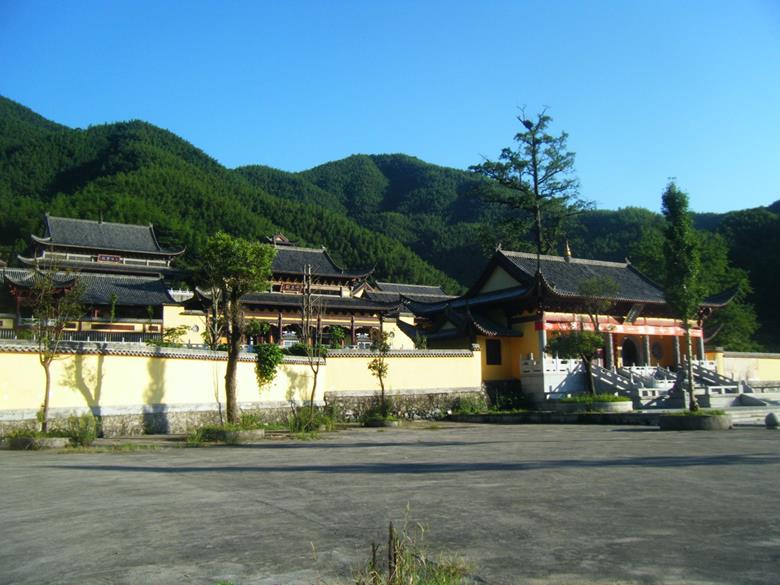
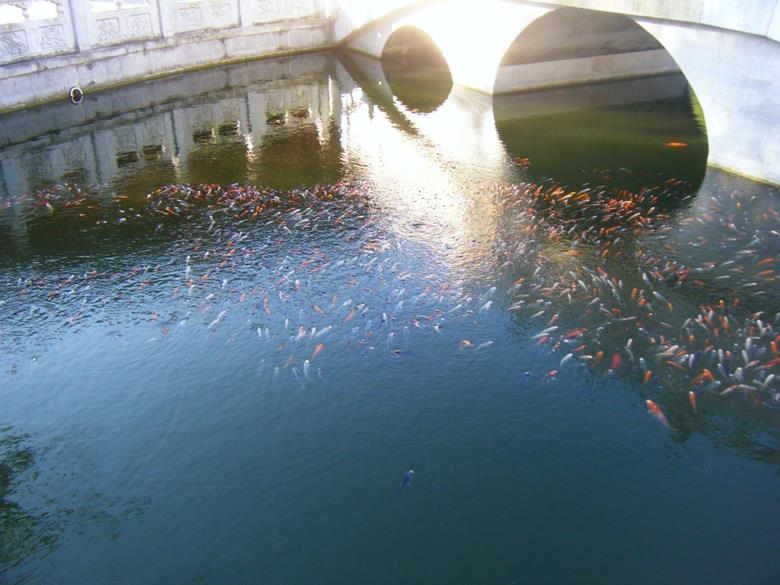
Like temples in Thailand, we can often see a pond where fish swim happily with out fear of being caught for food.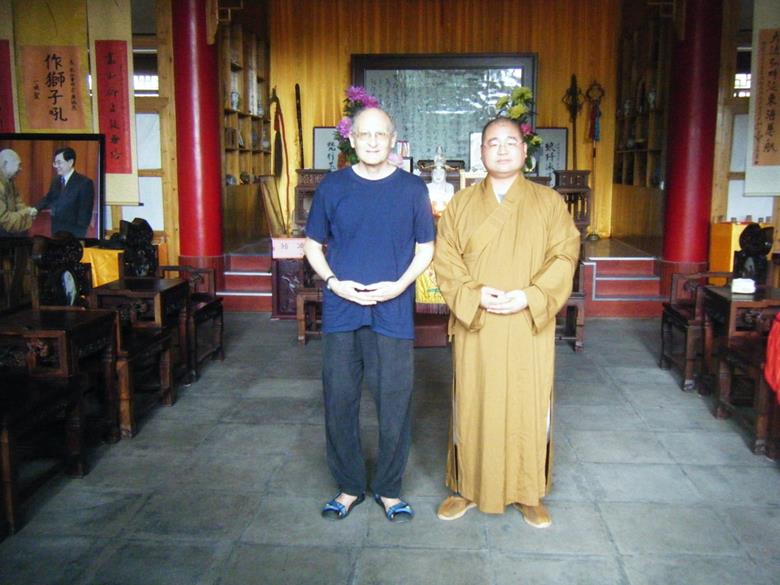
The Abbot of YangShan Temple and Myself

The abbot of Yang Shan Si Yin Si, was very surprised to see a foreigner come to his temple. I may have been the first ever! So he offered to help me on my pilgrimage. Pictured here are two students who speak English, along with their university professor. The Abbot then personally drove me to see two temples, both famous in the history of Chan/Zen Buddhism.
Visiting the Spot Where Dong Shan Was Enlightened
The first was Dong Shan Liang Jie (Japanese, Tozan Ryokai), and the second was Baofeng Si, where I stayed for a week. Here we are at the site of one of Yang Shan contemporaries, Dong Shan Liang Jie (807-869). He had a big question whether non sentient beings are enlightened or not. Finally while on pilgrimage, he saw his reflection in the water and got his answer!
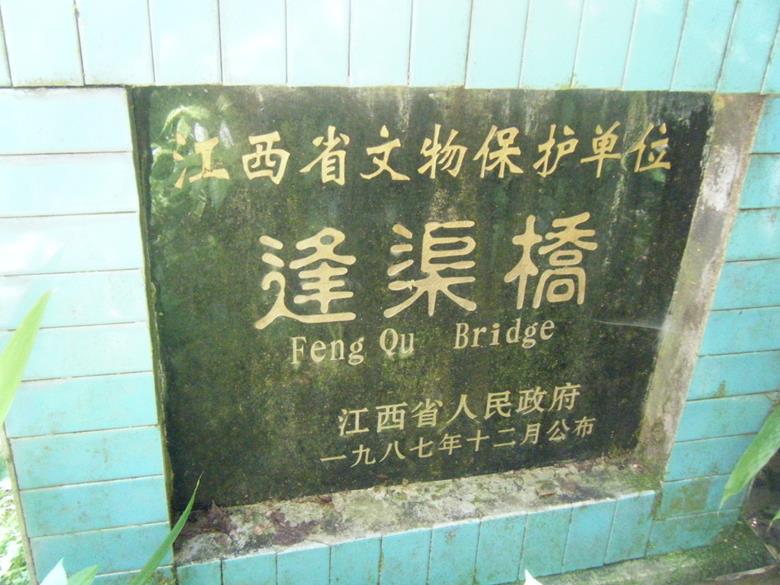
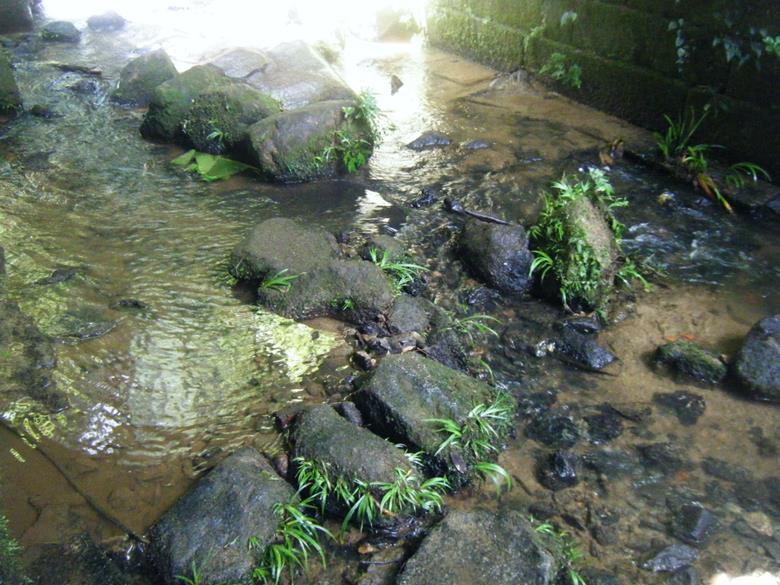
Here is a new building at Dong Shan’s temple. It had probably hundreds of monks when it was active 1000 years ago, but much of it fell into disrepair, and also, during the Cultural Revolution, many temples were destroyed. They are now being rebuilt.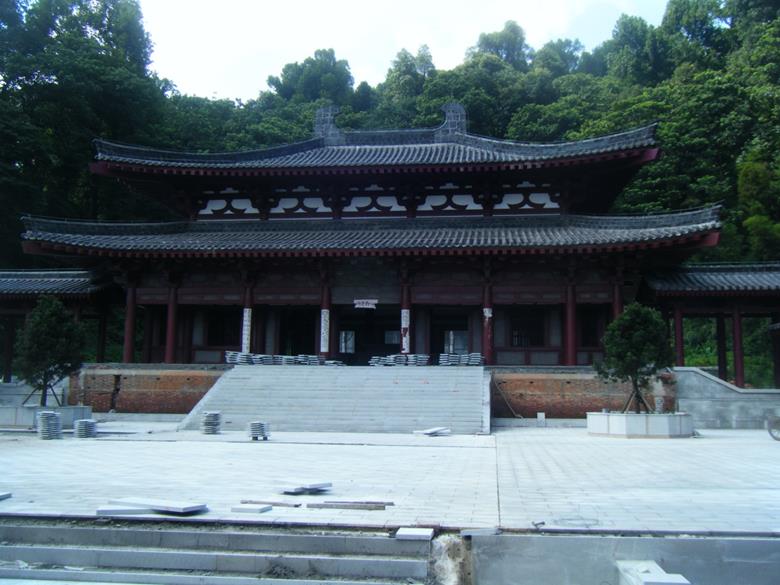
This is one of the few surviving buildings from the Ming Dynasty, at least 400 years old. 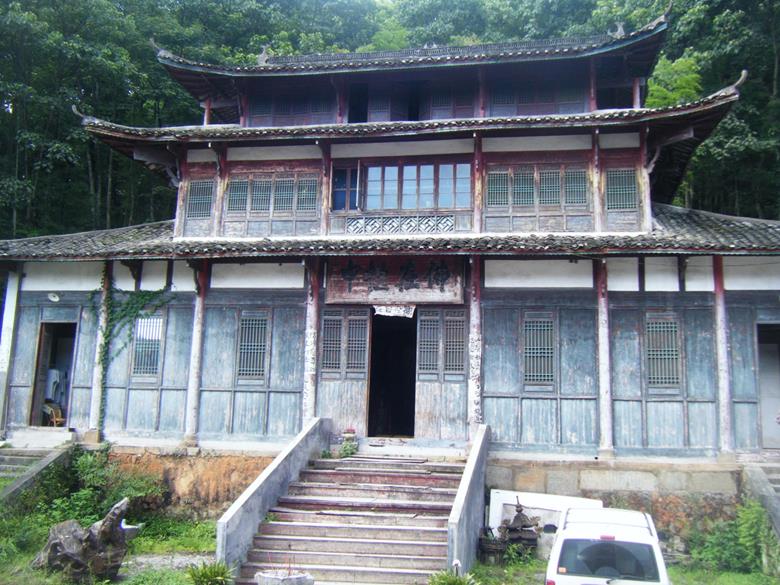
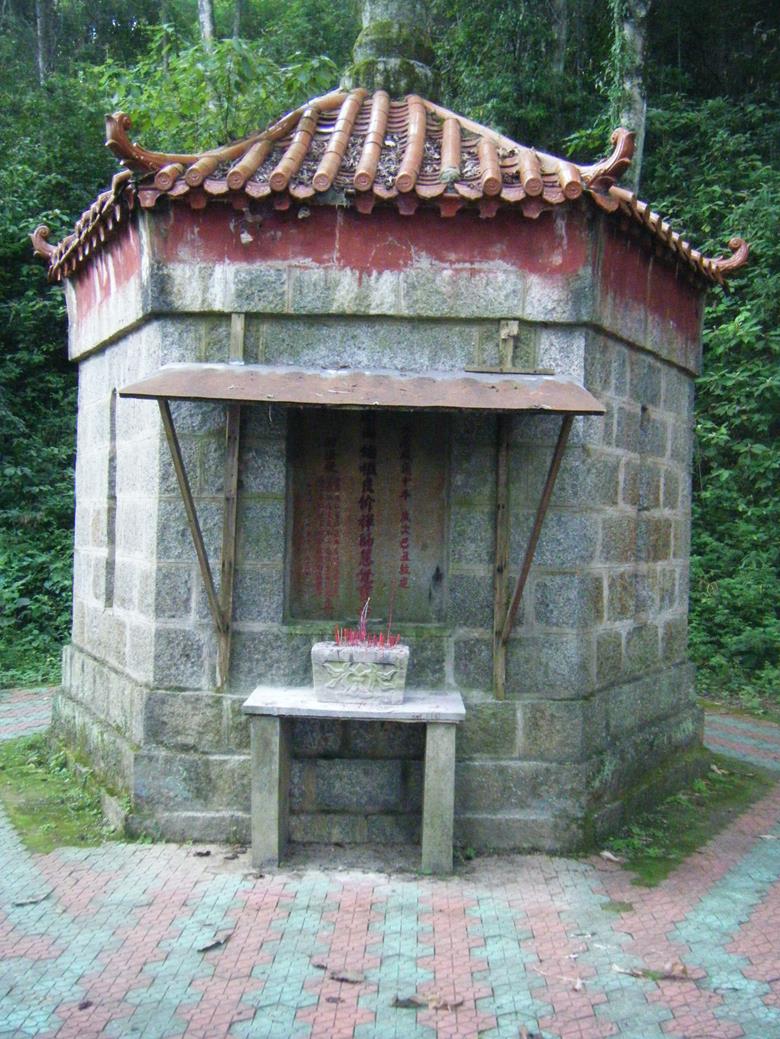
Here is Dong Shan’s tomb, which has been rebuilt
Dong Shan’s school is one of the two surviving schools of Chan. And I first trained in a temple (San Francisco Zen Center) that came from his line of teaching. Here are some rice buckets, used to serve rice at the second temple, where Yang Hang took me to stay. It’s told in one of the old Zen stories that a teacher used to serve his monks from buckets like these, and before doing so, would dance and say, “Come eat, little Bodhisattvas!”.
A bodhisattva is a being training to become enlightened. So he was encouraging the monks, as he served them from the rice buckets. The temple where these old style buckets are used is Bao Feng Si, where the great Chan Master Mazu (709-88)lived.
He was enlightened when his teacher chided him for being attached to doing sitting meditation. More about that later.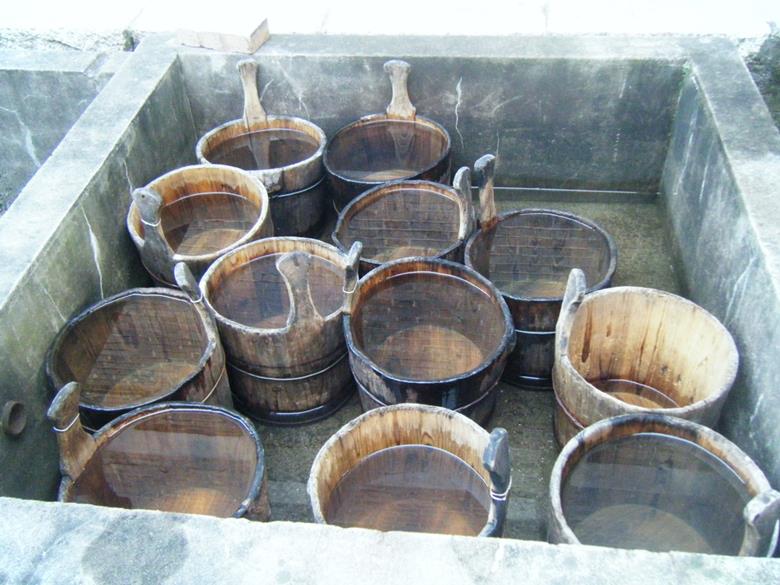
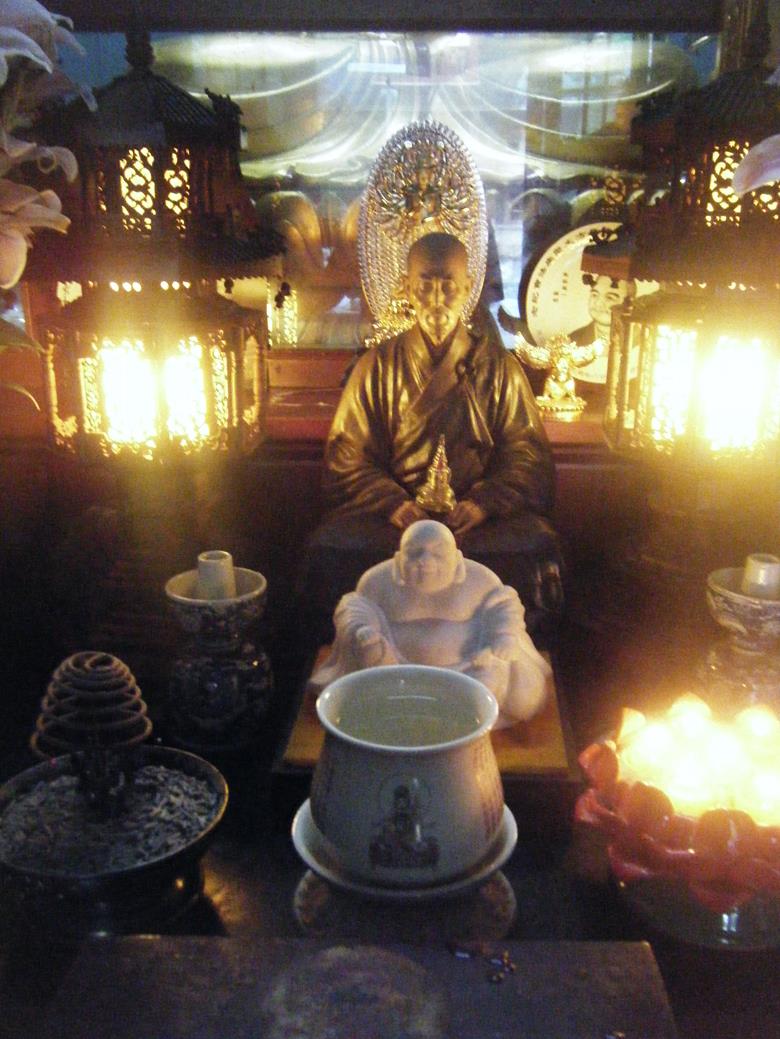
In the Reception Hall at Baofeng si, is a statue of Xu Yun.
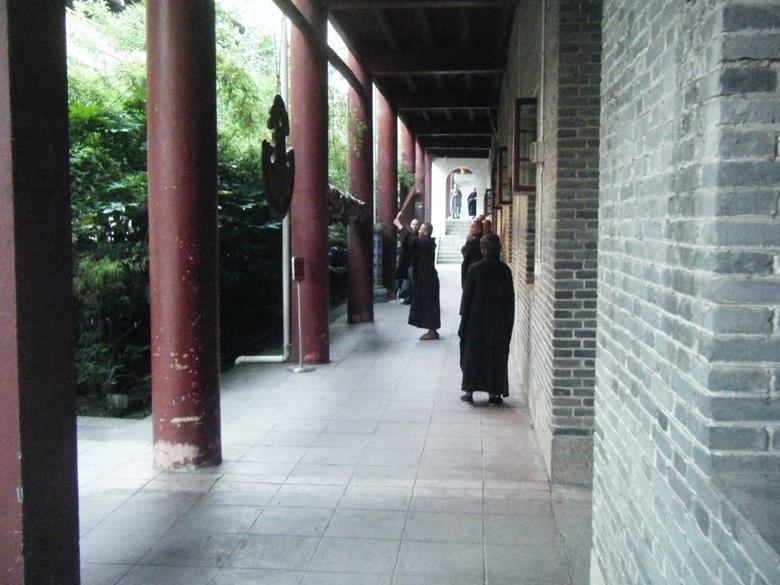
Hitting the wooden fish signaling meal time
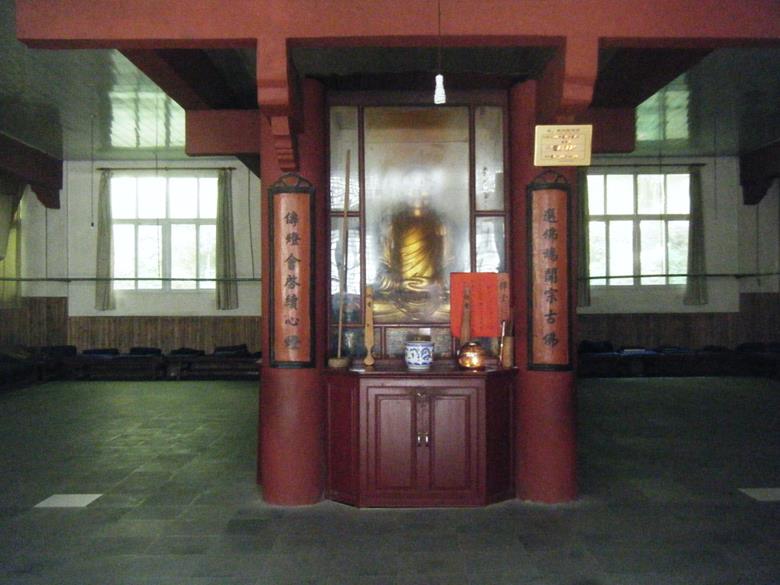
The meditation Hall at Baofeng Si. During Kinhin, walking meditation, the monks and laypeople circle the Buddha image in a fast, unstructured pace
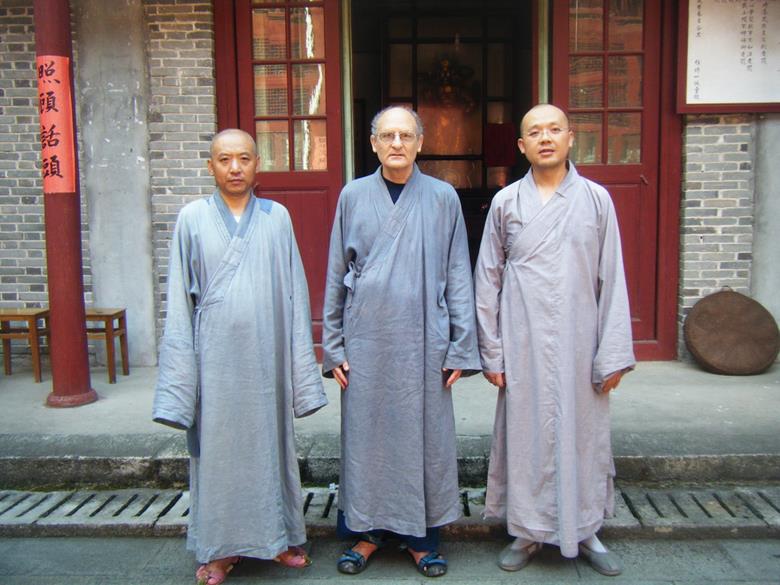
Standing in front of the Chan Hall with two regular Chan sitters. The monk on the left is the head of the Chan Hall.
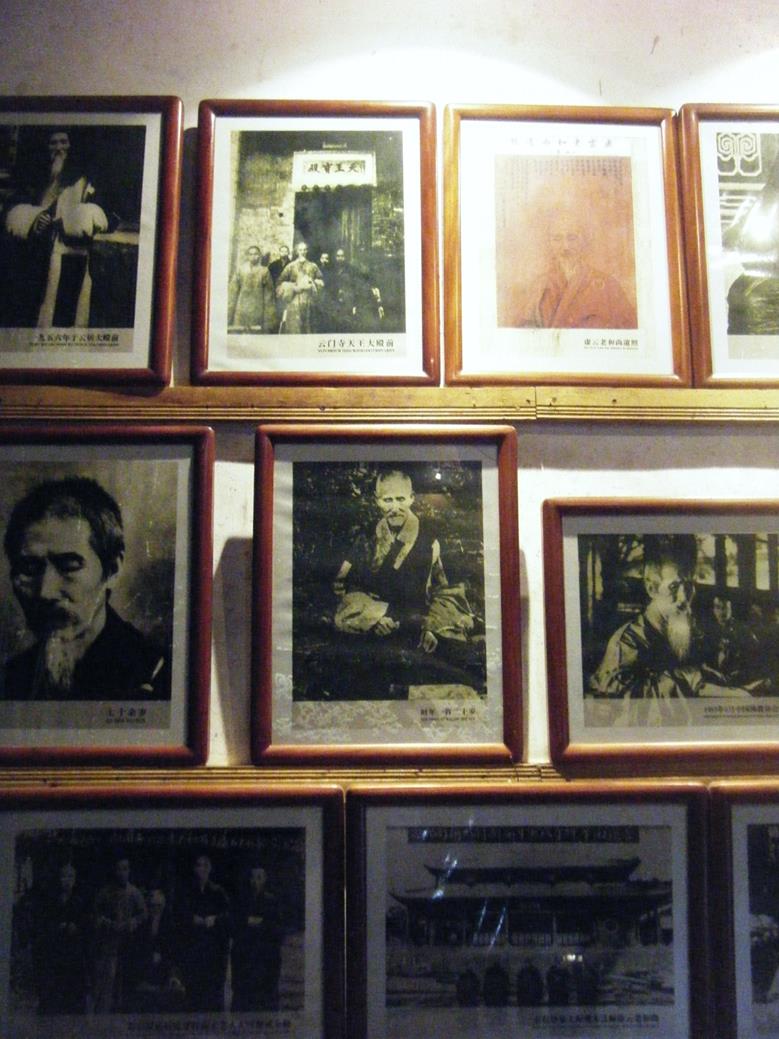
Yunju Daoying, Now a Major Training Temple
At the next temple I visited, which was founded by Yunju Daoying (Ungan Donjo d. 902),a successor to Dong Shan, we see many pictures and artifacts of Xu Yun, who is said to have lived or maybe died there. To understand the importance of Xu Yun, it is important to understand what happened to China, and its effects on Buddhism. The opium wars and the Qing Dynasty’s own corruption destroyed China’s defenses against colonial powers.
The forced importation of opium resulted in ¼ of Chinese people addicted to opium, which resulted in virtual collapse of the society. In the mid 1800’s, another import was Christianity. A Chinese man who was converted to Christianity believed he was the younger brother of Jesus. He garnered an army to fight the corrupt and oppressive Qing Dynasty.
Taiping Rebellion, a Horrible Chapter in China’s Century of Humiliation
Called the Taiping Rebellion, it resulted in chaos and civil war, lost food production, all resulting in between 20 and 100 million people dying between 1850-65. By contrast, the US Civil war lasted from 1861-65, and resulted in massive destruction in the US South, and perhaps 800,000 dead of a population of 32 million. China lost its amount of dead in a population of about 350 million. Perhaps up to 20% or more of China was killed outright or died of disease or starvation.
Then WWII happened, with the Japanese invasion, which is said to have resulted in the death of another 20 million. Xu Yun lived from 1840-1959. Thus, he lived through not just one, but TWO Holocausts!
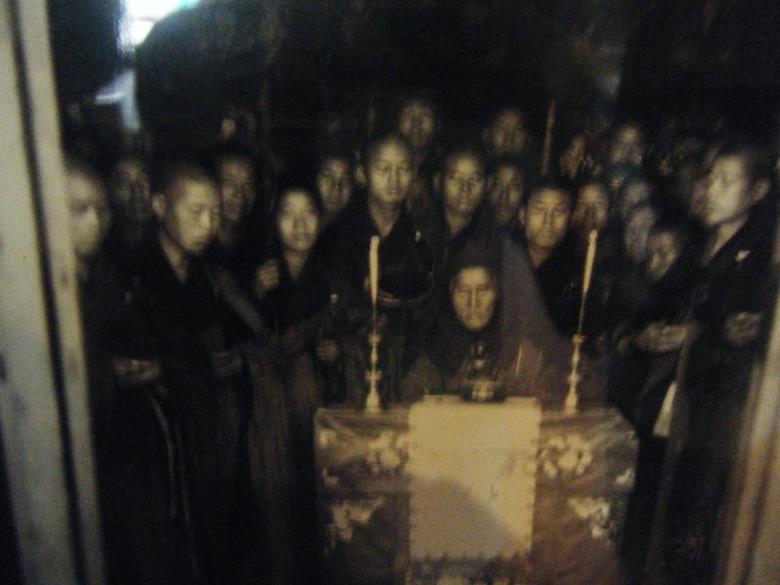
Here is a picture of the elderly Xu Yun, surrounded by his disciples. Including a young Jing Hui Lao Hesheng (“Jing Hui, the Old Monk [an honorific title]”). After the Communists took power, from about 1960-75, Jing Hui was imprisoned for 15 years, but on his release, followed Xu Yun’s example and rebuilt many temples in China, including Lao Zu Si, Si Zu Si, Bailin Si, and Yu Quan Si, all of which I visited and or stayed at.
Here is a picture of Jing Hui and myself.

Where The Dead Fox, Freed from his Karma was found, a small fox’s den
Visiting Baizhang Temple
Yan Zhen, the abbot of Baofeng Si, sent me on a tour with one of his young lay students, to see Yunju Shan, and I also to Baizhang Temple, one of the most important temples in Chan history. The founder, Baizhang, had a saying, “A day of no work is a day of no eating.” This goes against the rules laid down by the Buddha, but because Chan monks grew their own food, when Buddhism was almost destroyed by a Chinese Emperor in 843-5, the Chan temples survived, while others who were not independent, did not.
This inscription marks the site of a famous story in Chan. The story of the monk reborn as a fox. This is the actual cave where his dead fox body could be found.
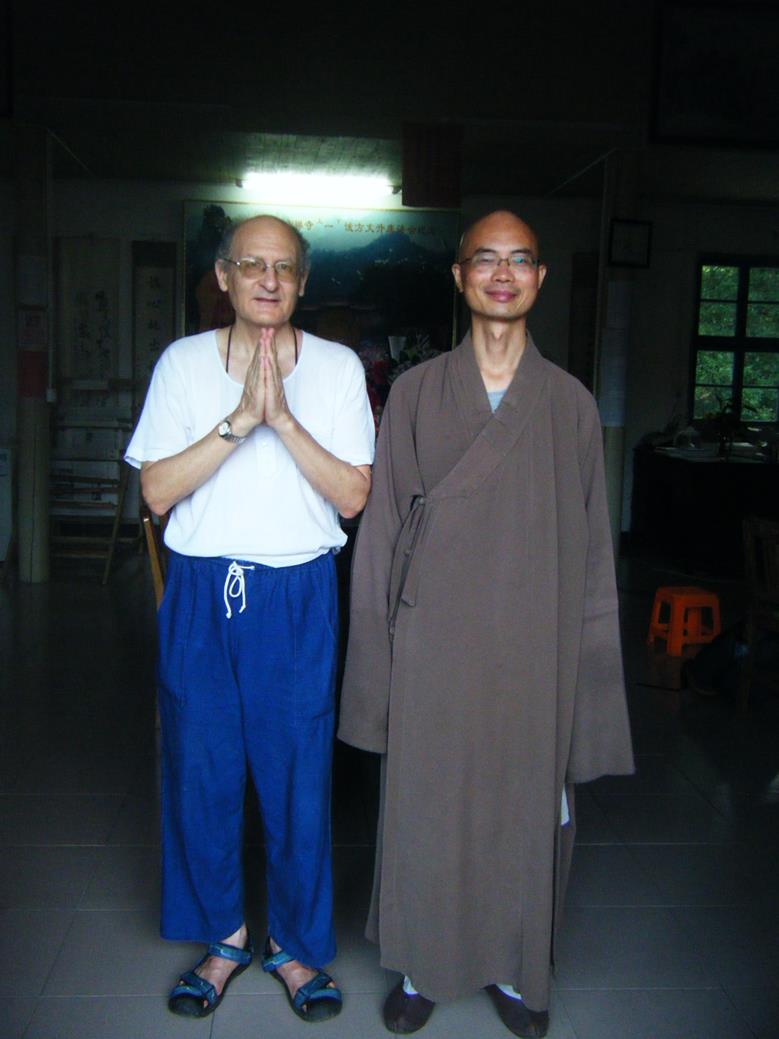
Yan Zhen is the abbot of Baofeng Si. He speaks English and visited Burma last year.
Maybe we can get him to come to Thailand, or even America.
Here is an image of old Mazu himself, who was a teacher for Baizhang, we will see that his students eventually produced Linji, who founded the second surviving school of Chan.

Climbing Chinese Sacred Mountains
Along with my vow to visit these famous temples of Jiangxi Province, I also wanted to climb two of the mountains in China sacred to Buddhists, which thousands of sincere pilgrims go to climb. The mountain shown here is Jiu Hua Shan, sacred to the Bodhisattava, Ksitigarbha, (English, “Earth Store”, Chinese “Dizhang”). It’s said that a Korean monk who was a manifestation of Dizhang, lived on the mountain for 75 years, back over 1000 years ago.
Fun Fact: Chinese People Have a Far Better Knowledge of US History Than We Do
It’s just amazing and astounding to me how profoundly ignorant Americans and Westerners in general know about their countries and cultures. As one US researcher, (now deceased) famously said, “People have NO IDEA WHAT HAS BEEN DONE IN THEIR NAME!”
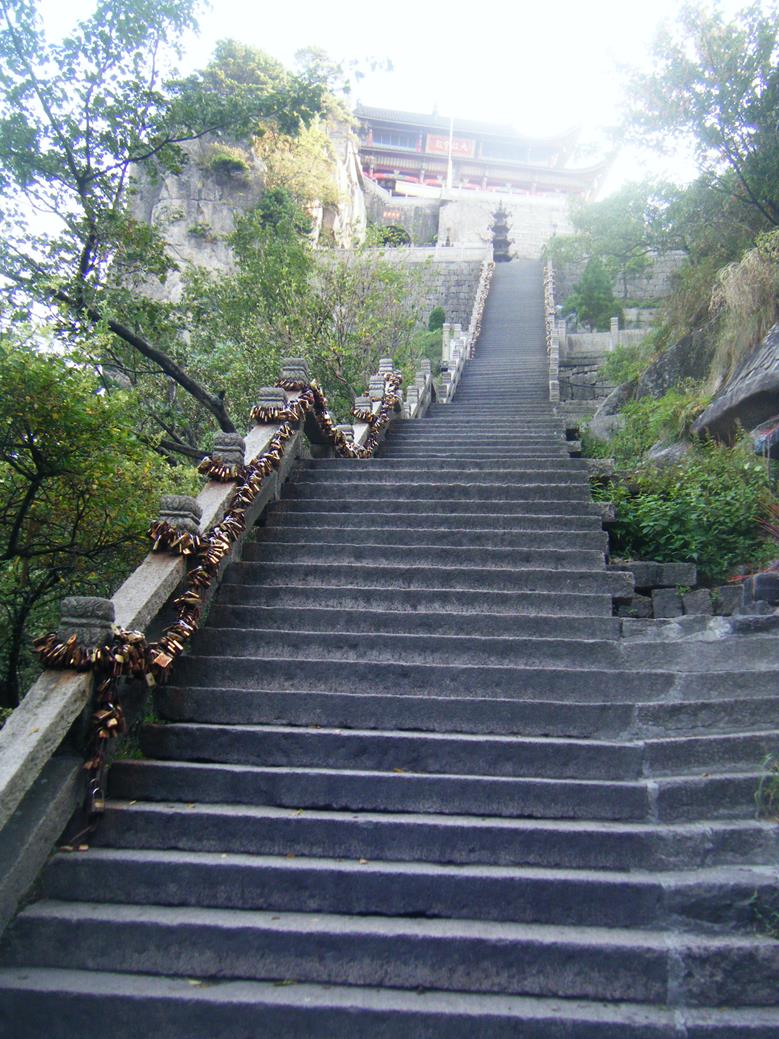
Here is a stairway on the way to the top of Jiu Hua Shan. Yan Zhen sent me to his monk brother, Yan Hui, who was my guide at Jiu Hua Shan. I also spent time with Yan Hui and discussed issues of history and modern society.

Three steps one bow all the way up Jiu Hua Shan.
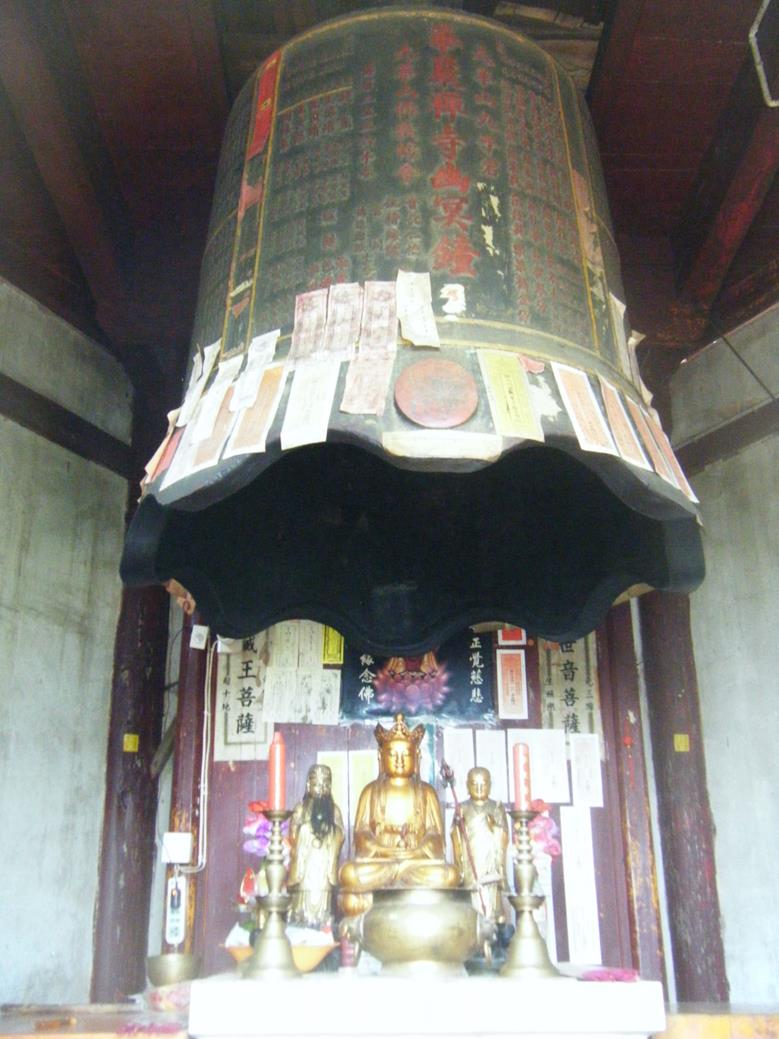
After climbing Jiu Hua Shan, Yan Hui took me to two other temples. This bell was placed at a temple with a sad history. During the Taiping Rebellion, 3000 people took refuge there, and were massacred. So the abbot of that temple brought the bell, to be rung in memory of the people killed, to help their ghosts rest in peace.
Visiting Wutai Shan, Home of Manjushri Bodhisattva

It took three tries to climb Wutai Shan, the legendary home of Manjusri Bodhisattva.The second sacred mountain I visited was Wutai Shan, or 5 Terrace Mountain, home to the Bodhisattva, Manjusri. At one of the countless temples on Wutai Shan, I saw this classic statue of Manjusri (Chinese, Wencu Pusa). I stayed at Wutai Shan for three days, and will write about it later on, as it was not so relevant to my discussion with monks in Thailand.
I had a less than great experience traveling alone at Wutai Shan, because I perceived a more money oriented mindset of this famous tourist attraction. This seems to be a tendency pretty much everywhere in the world nowadays.
Visiting Zhao Zhou’s (Joshu’s) Temple, Bailin Si
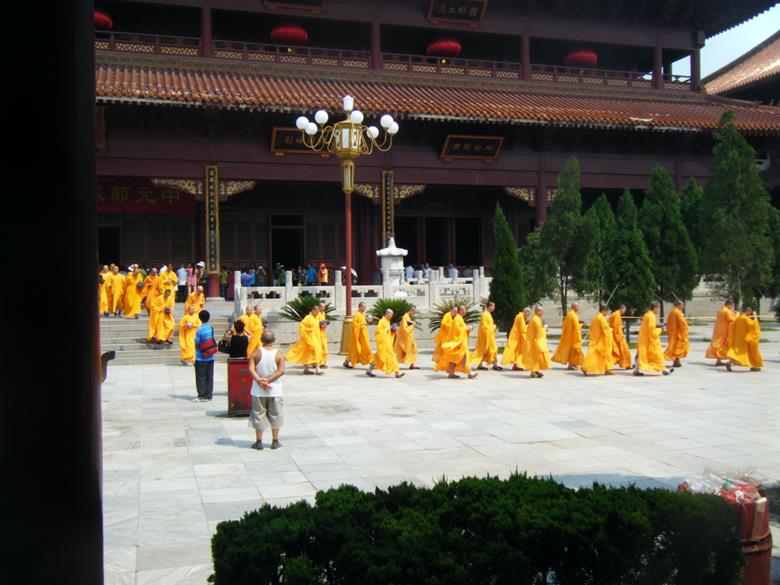
Monks leaving the chanting hall at Bailin Si.
This was the very famous monk, Zhao Zhou, Chan Master’s temple. The temple was totally destroyed, save for a severely damaged pagoda, over the last 1000 years. Jing Hui asked Overseas Chinese from different countries such as Singapore, Japan and Korea to donate money, and the temple was rebuilt 30+ years ago. It is a very active temple (Jing Wu, now at Tong Bo Yan Si did his solitary 3 year retreat here.) Zhao Zhou lived from 778-897.
It is said that after his teacher died when he was aged 60, he went on pilgrimage for 20 years, finally settling down at age 80, and he lived another 40 years after that.
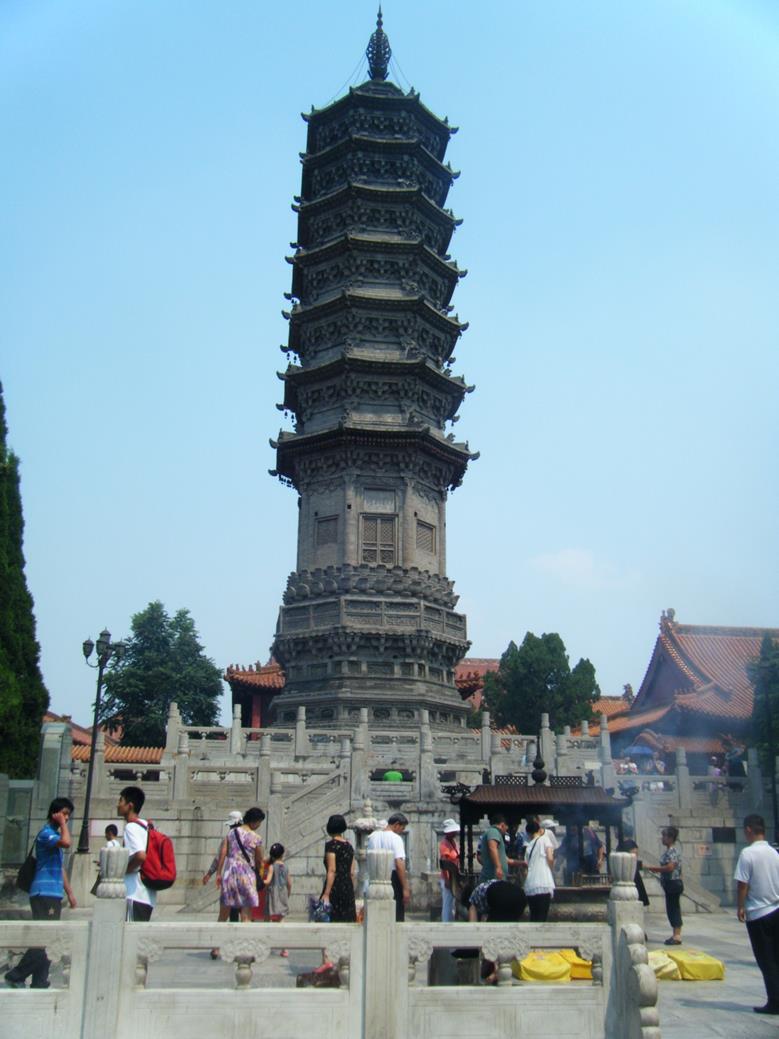
The Pagoda honoring Zhao Zhou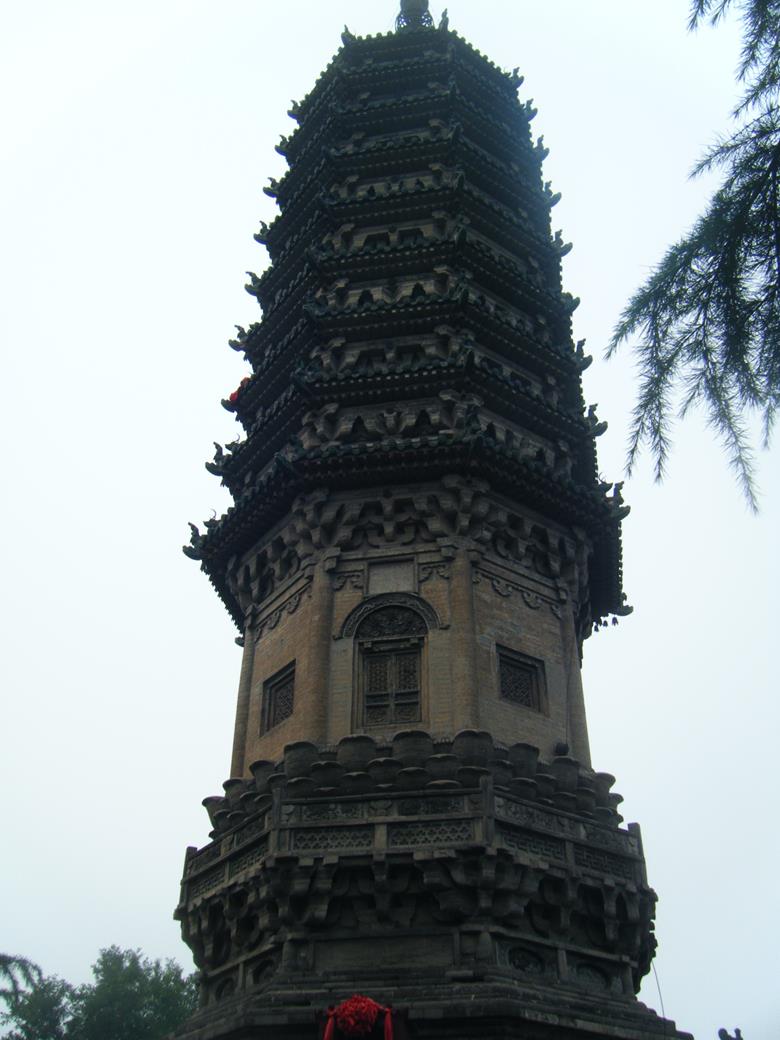

Jing Hui’s successor, Ming Hai is the abbot of Bailin Si.
Visiting Yu Quan Si
He was not at that temple when I arrived, so he invited me to see him at this temple, which had also been rebuilt by Jing Hui. This temple, Yu Quan Si, was in the teaching line of Dong Shan, although it came 3 centuries later. It is the place where a monk in the Cao Dong (Soto, in Japanese) school of Chan wrote a book, The Record of Ease, or variously translated as The Book of Serenity, compiling stories of teachers of Chan told throughout several centuries, and is used in conjunction with meditation study.
Here is a garden outside the meditation hall.
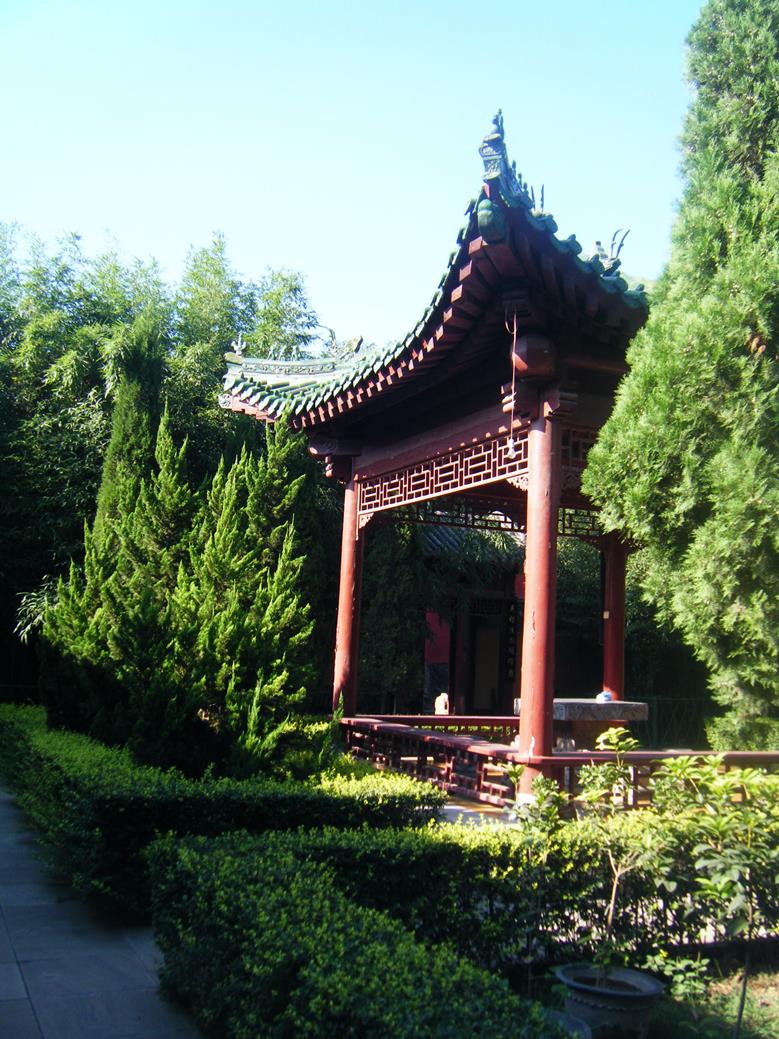
Visiting Linji’s (Rinzai) Temple
The final two pictures were taken at Linji’s temple. Linji was the founder of the Linji School, one of the two major surviving schools of Chan, or Zen. The pagoda and the meditation hall are shown here. I was brought here by a monk I met at Bailin Si, who calls himself Peter. The young girl, a college student name Jessie, came along, and helped translate for Peter and me. I used these pictures as a presentation to the monks in Chiang Mai, and a lively discussion followed.
See my other posts for my extended pilgrimage in China. But I wanted to include these pictures and a brief overview.

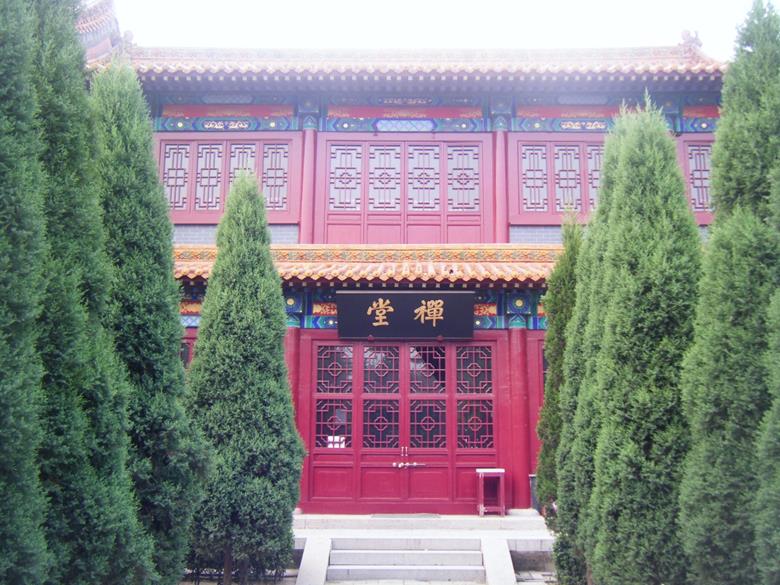
Filed under Travels in China
Filed under Uncategorized
A Pleasant Few Days by the River
Date: Sat, 16 Apr 2005 00:44:58 -0700 (PDT)
Well, I got out of Chiang Mai, and this morning ran into a woman from Kansas (she assures me that some Kansans practise yoga like she does, and she is very well traveled, unlike most Kansans.)
But I pointed out to her that I have met more people from Sonoma County than from the rest of the USA almost put together. two each from tiny Forestville, Sebastopol and Petaluma alone.
She figured as I did that Chiang Mai with a population about the same as Santa Rosa, would be jam-packed with Thai New Year and Water Festival revelers.
Well reveling there was for the past few days. On two successive days I ran into young people in their 20’s who invited me to join them, plying me with Seagram’s and cheap Thai whiskey (I politely declined, but did nurse a beer over three hours.)
But the really nice thing about my stay in this little town of about 3000 is that it is so reminiscent of Monte Rio (I think) where the Russian River is a great place to hang out on a hot summer day. The water was about 75 degrees this morning but yesterday in the late after noon it was probably bathtub temperature.
Hundreds of people, mostly young. Early in the morning before it got too hot I climbed up the hill where there is a very nice Temple and met the senior monk there, who teaches a form of meditation paying close attention to movement as you walk, stand or do various exercises, kind of like Tai Chi.
The first picture [hit thumbnail to enlarge] is one of young Thai monks. Monkhood is one way for poor young men to get a home and schooling, and I have met several very good monks who came from poor families, in addition to ordinary Thai men who are now living as ordinary people but spent their childhood as a monk.
I also show a cute picture of a Thai family on a motorcycle. I have seen as many as 4 grown men on one motorcycle, and yesterday, being a holiday, had many young families visiting Tha Ton for the festival.
One interesting thing about Thai culture is the modesty of the people. I never saw anyone wearing a bathing suit, and saw only two young men NOT wearing a t-shirt—people bath fully clothed. Maybe its different in the South with its reputation for fast women and a big sex industry, but here except for the large amounts of whiskey and beer, it seems pretty much confined to splashing water both in the river as well as on the streets. I didn’t see even too much drunkenness.
Right now it is about 95 in the internet shop and I will be jumping in the river after I finish this.
The third picture is that of a beautiful pagoda under construction. You can see the gleaming spire.
One question that comes up is, with all the images of Buddhas, and the shrines and so on, are Thai people, and Buddhists in particular, idol worshippers.
At a recent meditation retreat, the teacher pointed out that meditation has nothing to do with believing or not believing anything. It is a method of identifying our own false ideas about the way things really are, by rigorous examination. And this is not intellectual work, but through mindfulness of the body alone. Careful attention shows that the body, as is true with all matter, is mostly space, but true freedom arises from the experience of this , not an intellectual idea.
The historical person who became known as the Buddha, put it quite well, when he said, don’t believe what is written in holy books or stated by teachers or authorities or what is conventional wisdom or what is widely reported or believed. Investigate thoroughly for yourself.
He even told people not to believe him but to verify everything for themselves.
That said, it is a fact that this is hard work. It is much easier to get spoon fed information and believe. it. I met a guy from Georgia in Fang and we got into a go around about this.
He believes in the Bible implicitly, because many historical sites in the Middle East have been excavated and seem to confirm Bibilical accounts. However, when we get to things like the world being created in 7 days, 5000 years ago, he says that since so much in the Bible is authenticated, it must all be true. That is false logic, and in fact a common ploy in modern propaganda. Tell part of the truth, then after people believe you throw in lies that they don’t bother to question. Each “Fact” must be verified on its own merits or not.
As for idol worship, I know of a number of people who impute special status to pieces of cloth with different colors, or pieces of paper with pictures of dead men and pyramids. PYRAMIDS on them! People spend much of their lives trying to accumulate these pieces of paper, and the more they get of these ALMIGHTY DOLLARS, the closer to bliss they think they will be. They may even lie cheat and steal or even kill for these. So What is idol worship?
As a kid, I used to watch Big Brother , Bob Emery (yes that was the name of the show) and every day, all the kiddies would rise in the peanut gallery (that is the studio audience) and raise a toast -a glass of milk–to a picture of President Eisenhower. This while “Hail to the Chief was played.
One person’s symbol is another person’s idol. But boy do people get upset if you question the reality of such a transference. A Buddha statue has no more intrinsic value than a dollar bill, but they each mean something to whoever ascribes them meaning.
But one thing about the worship of Buddha images, as well as statues of famous monks here. While the people doing such worship are not doing the work themselves of perfecting their character, as the teacher, Goenka, reminds his students is “the real work”, at least they esteem those who have done the work of perfecting their character.
In Thai Buddhism, the highest level of human achievement is an arahant, literally, one far removed from character flaws, having rooted out all greed, anger foolish thinking, etc.
This occurs only after very rigorous self examination. I once asked a monk here, who spends time at different temples and seems to be a quite free spirited sort, “How many arahants do you think there are in Thailand?” He replied, with a twinkle in his eye and a cat who ate the canary smile, “I don’t know how many arahants there are in Thailand, but I know my own understanding”.
In closing this missive, I want to honor Bob Marley, who wrote Redemption Song.
Bearing in mind the Fraternity of Bush and Kerry at Yale is Skull and Bones (really) which was founded by slave traders and opium smugglers, here are the lyrics
Redemption Song
Old pirates yes they rob I
Sold I to the merchant ships
Minutes after they took I
From the bottomless pit
But my hand was made strong
By the hand of the almighty
We forward in this generation
Triumphantly
All I ever had, is songs of freedom
Won’t you help to sing, these songs of freedom
Cause all I ever had, redemption songs
Redemption songs
Emancipate yourselves from mental slavery
None but ourselves can free our minds
Have no fear for atomic energy
Cause none of them can stop the time
How long shall they kill our prophets
While we stand aside and look
Some say it’s just a part of it
We’ve got to fulfill the book
Won’t you help to sing, these songs of freedom
Cause all I ever had, redemption songs
Redemption songs, redemption songs
Kind regards,
Eric
First Published at http://www.cuke.com
Filed under Bumbling about
Why Sit?

What is this thing about sitting meditation? Sometimes I wonder what it is that makes me sit and practice, and after all, why lots of people throughout history have done so. Most people, especially Westerners think that meditation is something weird or even dangerous. Years ago, I visited a community not too far from my university. This was a time of burgeoning spirituality in 1970. I was talking with one of the members of the community and when I told him I was interested in meditation, he replied that meditation was a sin. Since when has breathing while being aware of one’s own breathing been a bad thing?
Another time, years later, I went on a business trip to Birmingham, Alabama, for a workshop. My host, in the midst of some cordial banter, asked, “So what did you do before you were in the insurance business? I said, “I was a Buddhist monk”. A big curtain of ice crashed down between the two of us, and his face became cold and hard. “THAT’S DIFFERENT!” he shot back. Sheesh!
Well, nowadays there is growing interest in meditation practice, but in Asia, I find that people are far more open to the subject even if they don’t do it. Seems like people at least in Thailand and China, where I have spent most of my time the last few years often consider it fairly normal. And commendable.
So the question is, what is it about meditation that is so special while not being special at all?
I did a web search and found pictures of various famous sages. Here is a classic picture of Shakyamuni Buddha, who reportedly lived about 2500 years ago, and is considered the founder of Buddhism.
This is Hsuan Hua, the famous disciple of Chan Master Xu Yun. Hsuan Hua established a strong Buddhist Center in California, the City of Ten Thousand Buddhas, in Mendocino County, as well as other centers. There he is, sitting in Lotus Position.
Here is Lahiri Mahasaya, the famous sage discussed in Yogananda’s Autobiography of a Yogi.
This is a picture from the Brooklyn Museum, showing a man meditating in a garden setting. I think this picture is Persian, but I am not sure, he does not appear to be East Asian.
Here is a picture of the great sage, Laozi, who lived in China and was roughly contemporary with Gautama, the Indian who became known as the Buddha. As an aside, he got the name “Buddha’ because when people asked him who he was, he answered, “Buddha” which means literally, “Awake”. Laozi was the main founder of Daoism. The Dao is “the Way”. Things just as they are.
And here is another picture of Daoist Meditation
Daoist, Meditation, “Gathering in the Light” is the method used.
Here we see depicted Mahavira,
a contemporary of the Buddha. It would hard for the average person to tell the difference between this picture and one of the Buddha. They both advocated sitting crosslegged, and both are often depicted with hands in their lap, seated on a lotus seat, with a halo on their head. Mahavira was the founder of the Jain religion which is still practiced in India.

Bodhidharma, the legendary Indian monk, who brought Chan/Zen to China. He is said to have sat meditating, facing a wall in a cave for nine years.
Some contemporary sitters in a park, enjoying their meditation together.
What do all these spiritual practitioners have in common? They SIT!
Years ago, while I lived at the San Francisco Zen Center’s Green Gulch Farm, I spent time with a Yurok Indian Medicine Man, Harry Roberts, who actually was half Irish and half Indian, but had trained with his Uncle, the tribe’s medicine man. He told me that one of the practices that he did was to go to an isolated forest or mountain place, draw a three foot circle, and sit there for three days with no or almost no moving.
When I was waiting for an airplane in the Singapore Airport recently, I asked if there was a meditation room. In Bangkok and Chiang Mai, Thailand, there is a room for Buddhists and a room for Muslims. In Singapore there was a prayer room that is presumably non denominational but probably almost anyone using it is Muslim. There is also a meditation room, for the use of anyone. I went inside and there were just a few small mats and one chair. I arranged the mats so I could do Zazen (seated Zen meditation), and was there for a few minutes when two people entered. One sat crosslegged and one sat in a chair. Because of the hat one wore, I knew they were Muslim. I could hear them talking. Probably Malay, one said one sound that seemed to be “Buddha’. So my guess is, that they were talking about that Westerner sitting by the rear wall of the room, and guessing I was Buddhist.
Interestingly, I visited a bead shop in Singapore, and the owner sold various kinds of beads, such as necklaces. He also sold Buddhist malas. And when I saw some odd ( to me) looking malas, he told me they were Muslim beads. They have 99 beads, and Muslims chant the names of God. Buddhists use ones with 108. And of course Catholics also use rosary beads. Well, it is not the same necessarily as sitting, but they are used to help control the ongoing out of control thought process which 99% of us call ‘thinking’.
One time I found myself, through an internet chat situation with someone with an Arabic sounding name. He was fretting about the world, which I can certainly relate to. So I suggested that he go into a quiet room, sit down, and start to breath. Breathe in “Al” and breathe out “Lah”. Al lah….Al lah. He was flabbergasted. “How did you know I already do that, you must be Muslim!” “No, I replied, this is normal, sit down, breathe in breathe out, this is the human way to calm the mind”.
“No no…you must be Muslim… you should read the Koran.” I thanked him for his suggestion.
The forest monks in Thailand breathe in Bud, and breathe out Dho…Bud…dho. Same thing. There are all kinds of methods one can use in the process of meditation, but common to many many is the simple act of sitting. But why sitting?
Sitting seems to be the natural way for us to just settle down. But in addition, when we sit in a symmetrical way, such as crosslegged, or in a chair with feet planted on the ground, our body finds alignment and balance. Once the body is aligned and in a state of balance and in harmony with gravity, our whole being settles down, in a natural and harmonious way.
We don’t have to “do” anything. Which is exactly the point. We humans are always doing or thinking we “have to” do something. Eat, sleep, walk, talk, but these are more complicated and require more than just the act of focusing, or just observing. So we create more and more stuff from our actions. It really does get tiresome, finally!
There is nothing to do and nothing to fix. Everything is just as it is. Once we are willing to Just Sit, just standing, just walking and so on become natural, our life becomes seemingly effortless, without struggle. “Learning” to sit is the first step.
Lying down is OK, too, but it seems harder to keep the mind from wandering. Likewise with walking or standing. All of these are good and useful, especially if done observantly.
Once we reach a point of observing and focusing, then our actions start to change in subtle ways that are apparently more harmonious. Humans share some basic hardwired values, like not harming or killing, stealing lying, etc.
Of course those unwholesome activities can be very profitable, which is why lots of people do them. But in the end, settling down, seeing things as they are, life becomes somehow easier.
So, sit, be aware.
Usually, when we enter a Buddhist temple or meditation hall, there is a statue or an image of Shakyamuni Buddha, or another of his famous disciples or other Enlightened Beings. People objectify these images, and we bow to them. Some people dismiss this as idol worship. How can bowing or offering incense of flowers to a block of wood or stone be useful?
However, when I see a such a statue, I ask, what is this about? Is the block of wood saying, ‘give me money’, ‘give me incense’, ‘light a candle’, etc.? I can assure you that the image will do just fine without that (although making some offering to the temple will help support the activities there of course, and also help to open our hearts with the feeling of generosity.) But that is not what the statue is ‘saying’. I am amazed that people overlook this most direct teaching. Children learn by watching and copying others. So the wordless teaching of a Buddha image is, “if you want to be liberated and free, like me, then do what I am doing RIGHT NOW. SIT!” Said with a smile of course.
The great founder of Soto Zen (Caodong Chan in Chinese)Dogen Zenji, gave a wonderful exposition of this practice, Universally Recommended Instructions for Zazen. In it he says,
“Need I mention the Buddha, who was possessed of inborn knowledge? The influence of his six years of upright sitting is noticeable still. Or Bodhidharma’s transmission of the mind-seal?–the fame of his nine years of wall-sitting is celebrated to this day. Since this was the case with the saints of old, how can we today dispense with negotiation of the Way?”
http://ordinary-extraordinary.blogspot.com/2010/03/dogens-fukanzazengi-section-two.html
Of course, this sitting does not mean being a Couch potato! It is not an excuse to zone out. However, sitting frees us from the usual tasks that living beings have, and allows us the freedom to direct our mind, or as Dogen says, to turn the light backward. Instead of always looking outside, look within.
Jesus said not to worry so much about the splinter in the other person’s eye, but to see the log in our own eye. That is the same idea. It is sitting which is the scalpel that refines our consciousness.
When we first start to practice sitting meditation, our minds and bodies may be very restless and even uncomfortable, kind of like a fish out of water, flopping around, or, as it said in some of the earlier Buddhist texts, like a calf tied to a post, jumping around, trying to escape.
However, if we use our consciousness and effort to gently and persistently return to just sitting with our meditation topic, be it mindfulness of the breath or body, or thoughts, or a mantra, or other specific mental object, or even, no object just attention to the present moment… at some point we realize that Dogen is correct when he says, that Zen sitting is ‘not meditation, It is simply the Dharma Gate of Repose and Ease.
Sitting down, settling down, we find that we and everything is somehow OK just as it is. From there, we can go out into the world and act appropriately.
Look again at all the famous sages noted above, from many spiritual traditions. What do they have in common? They sit!
Filed under Uncategorized
My Stay at Tong bo Yan Si, 2012
Shortly after I arrived in Xiamen, I was staying in a guest house in one of the few older districts left in Xiamen. Many Chinese cities nowadays have torn down the older neighborhoods, preRevolution. One such neighborhood had seen many overseas Chinese built large beautiful houses there, in the period of the 1930’s, I believe. And this one neighborhood was slated for demolition, in order to build the predominant highrises or as occurred perhaps 20 years ago, non descript grey concrete housing. Most of the Overseas houses, though, had quite a lot of charm, built from brick or occasionally having stone exteriors.
The place I was staying in was brick, and had a nice yard and patio. However, shortly after I arrived, I got a really bad case of bronchitis, brought on, I think, from the air conditioner in my room that had not been well maintained. It took me a month to get better, having thought I was better and then getting a relapse after a day out and overexerting myself. In any case, the proprietor let me know that a large group was coming in, and I had to leave.
So, even though I was feeling sick, but at least improved, I called my friend Cheng Rong, who spoke with Jing Wu Fashi, the abbot at Tong Bo Yan Si. He arranged for the office manager to meet me at the Bus stop in Tong An, the smallish city in the Xiamen district, but outside the city proper. It reminded me a little of the situation in San Francisco, which is a coastal city, but with suburbs outside the city across the Bay.
Likewise, Tong An is reachable by a bridge which separates Xiamen Island from the mainland. After a wait of about ten minutes, my old friend Xiao Xie showed up in the Temple SUV. In Chinese, the character Xiao, means small. And there are lots of Chinese who have a two syllable name beginning with Xiao. So I think when you see someone with a ‘Xiao’, it is sort of similar to the diminutive. Like Johnny, or Billy or Jimmy or Bobby.
Since I was coming on sort of short notice, they had not really prepared my room. The room was built higher up the mountain from the room I had stayed at last year, and was accessible either by a dirt road, winding up the mountain, or by a footpath chopped out of the mountain and made climbable with stone steps most of the way—about 250 pretty steep steps.
When I got there, it was early July, the hottest time of year, with temperatures in the high 80’s-90’s Fahrenheit, or mid to high 30’s Centigrade. HOT. And the room was built into the mountain and its roof was the stone floor of the top plaza, where the original 800 year old temple and hermit cave were located.
Xiao Xie got a mosquito net out and set it up, and got my bedding together. I was still weak from my illness and the heat was overpowering. The room had an air conditioner, but I was wary of it since I had gotten sick earlier. So I opened it up and saw that it too needed a serious cleaning. I told Xiao Xie about this, and the next day, a three man crew came with some water blasting equipment and gave the air conditioner a serious cleaning. After that, I kept it on a fair amount of the time. However the electric grid is not so developed, so it didn’t have enough power to really work well. It was better than the one at the hotel, which, though it cooled the room was dangerous to use.
So I settled into my routine. My goal was to do a 100 day retreat, sitting about 8 hours a day. That is pretty challenging, and so I started off slowly, and gradually to build up stamina. I also read about an hour a day from one of the old Zen Koan books. This one was used a lot by the Soto School in Japan, that is called Cao Dong in Chinese. It is often named after the two founding masters of that school, Dongshan Liangjie and his disciple, Caoshan Benji. See the website, http://www.caodongzazen.com/english-CaodongFamilyTree.htm mo
Filed under Uncategorized
A Week of Living Dangerously in Crimea?
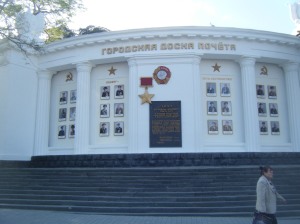
After WWII, Sevastopol was destroyed. Many of the buildings have been rebuilt in classical Greek style.
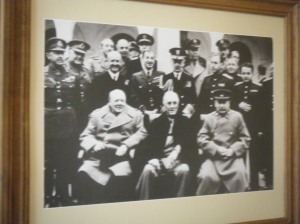
The iconic picture of Churchill, Roosevelt and Stalin at the Yalta conference. It created the post WWII peace and also sewed the seeds of more conflict.

My Russian friends posing in front of the memorial to the British soldiers who died in the Crimean War. Scene of the poem, the Charge of the Light Brigade, where 600 cavalry rode to needless death in one of Britain’s vainglorious imperialist misadventures.

The Russian perspective on the Cold War.
“The Forces of Peace are Invincible!” On the left scale, are Uncle Sam, DeGaulle, who tried waged war on Vietnam and Algeria, among others. Chruchill, who used poison gas against Iraq about the year 1921, and against Russia in 1919. And the “Granddad of the Surveillance State, first head of the FBI, J. Edgar Hoover.
Filed under Uncategorized
My Visit to Russia for Victory Day, May 9, 2015

70th Anniversary of Victory. St. George’s ribbon is orange and black, and is a symbol of traditional Russia. The Hammer and Sickle is the symbol of the Communist Party, for which there is some nostalgia, and some revulsion. (Same as the ribbon). So my take on this is a spiritual reconciliation of two important but contrasting parts of Russian history.
With all the tension in the world today, I wondered what to do.
My grandmother told me that only her sister and her cousin escaped from the horror of Europe in WWII, across the USSR, to Palestine, every one else died. The Nazis could easily have defeated England, and Europe would be a very different place.
We are often told that “America won WWII”.
What we are not told is that Germany attacked Russia in June, 1941, six months before Pearl Harbor. (They delayed the invasion due to some of their army tied down by the GREEK resistance, but that’s another story.)
We are not told that over 20 million Russians died between then and May 9th, 1945, when the German army finally surrendered.
We are not told that Germany lost the war, at the gates of Stalingrad, when the German army surrendered, and Russia counterattacked and went all the way from deep in Russian territory, to Berlin.
By contrast, the US attacked on D Day, 1944. We lost 400,000 dead, not 20+ million, and aside from Pearl Harbor, US soil was never touched. America lost about 3000 killed by the Japanese at Pearl Harbor. Russia lost over one million people in Leningrad alone.
The Russians were attacked by 222 divisions. America faced only 11 divisions, of a severely weakened German army.
So in recognition and gratitude, and in the face of Obama’s petty refusal to attend the 70th anniversary of that May 9th Victory, I decided to go to see for myself what is going on there. It is important to note that in the parade, Russia’s military was joined by China’s and India’s as well as several other countries, and I think 25 countries sent delegations. So if you think that Russia is isolated, and that US policy towards Russia is working, think again.
When I arrived at my inexpensive hostel in Moscow, the pretty young English speaking woman at the front desk said, jokingly,
“So you are American, did you bring a gun with you to protect yourself from us monster Russians?”
The 70th anniversary was a very big deal. There were posters everywhere, and that victory is a national holiday, like our 4th of July, complete with fireworks and parades. And why not? What Russia went through in WWII makes our Revolutionary War look like a walk in the park. This was not just about getting rid of the King of England, it was a matter of national survival.
Heck, if by some miracle, we European based invaders suddenly disappeared, the Natives whose land we really did devastate, would be as happy as the Russians were, to have defeated the Nazis.
While in Moscow, I went on a couple of walking tours, to the Kremlin, the Lenin Library, the fancy shopping district, and interestingly, the Moscow subway, or Metro, many of whose stations are decorated with mosaic ceilings, sculptures, chandeliers, and so on. On one of the tours, a man approached and asked if anyone wanted to go to the Bolshoi Ballet.
It was expensive–$80 for one of the worst seats in the house, high up on the top balcony, and way off to the side, you had to lean over the rail to see the full stage. I thought, how could I NOT see the Bolshoi Ballet in Moscow of all places. The house was packed.
As I made my way around Russia, you might imagine, people were curious and surprised to see an American, since there aren’t that many around. Not too many English speakers either.
However, people were friendly.
My first dinner, I went to a cafeteria style very popular restaurant, where I could point to what I wanted. No menu needed.
When I saw what was offered, I felt like I had gone to my Nana Goldforb’s house, or maybe dropped into a Bar Mitzvah.
The food is very similar to the Jewish home cooking that my grandmother served. Pickled herring, soups, chicken, were a reminder of my childhood. I even saw Homontaschen, the traditional Jewish three cornered pastry everywhere.
There are a number of museums but unfortunately, I had no guide, so it was hard to get around to see everything. But fortunately, my hostel was right near the center of Moscow, so I could get a good feeling for the city.
There is Kremlin, with its iconic cathedral,Saint Basil’s, and many Churches which have reopened since the USSR discouragement of worship ended. Most people are very patriotic, there is a lot of nostalgia for the days of the USSR. and lots of Hammers and Sickle are around. However, Stalin has been more or less discredited. Lenin, less so. On the other hand, some people still credit Stalin’s leadership in defeating the Nazis.
There is also quite a bit of controversy about his rule, whether we are told in the West the true story or not, in full.
He was quoted as saying that Russia was 100 years behind Western Europe and America, and that if Russia did not modernize in 10 years, it would be crushed. And an attempt was made to crush Russia, more than once.
Another example, was a recent US story by some American who said that the Nazis and Russians planned to divide up Europe in a treaty called the Molotov Ribbentrop treaty.
I had to point out to the person who told me about that, that Stalin wanted to build communism within Russia, and defeated Trotsky, who wanted communism to expand. Hitler’s Mein Kampf made it clear that he wanted to expand to the East, that he regarded Slavic people with contempt. So that treaty was similar to Chamberlain’s “peace in our time’ treaty, where Czechoslovakia was sacrificed to give England time to prepare for a war they knew was coming.
Likewise, people often criticize Russia’s decent into totalitarianism, with its horrors. but few know that England, the US, France and Italy and Japan attacked after the Bolshevik revolution.
“Workers of the world, unite!”
Not if the capitalists can stop it. If Russian had not been threatened, things may have turned out differently. See below for more on that. Someone once said “Your’e paranoid” “True, but even paranoids have enemies!”
Anyway, what I saw was that Russia today is attempting to integrate its past, under the Tsars, who had their own problems, the Communists, and the Russian Church. Some people have become religious, some not. Young people have mixed feelings about the Communist era, many are glad to be free, that is free to struggle in a much more competitive environment, dominated by money. When the USSR fell, Russians traded lack of free speech for a dog eat dog economy. Which is pretty much what I see in every country I have been in. Lots of young Russians are scraping by on low wages and high expenses. Sound familiar?
Next, I went to Crimea. Crimea is famous to us for the Crimean War. Crimea reminds me of Sonoma County, California, where the climate seems to be similar (except none of Sonoma’s coastal fog). There is also a strong influence of classical Greece. Probably why for centuries, various countries have fought over it.
I visited a city on the Black Sea coast, called Sevastopol, from which the name Sebastopol (near the Sonoma County city of Santa Rosa ) comes.
The Nazis attacked and, following a brutal year long siege, eventually captured Sevastopol early in the war, but after Stalingrad fell, the Russians battled back and recaptured it. One resort town, Yalta, was the site of the famous conference between Roosevelt Churchill and Stalin.
My Hostel manager, who also was my guide for two days, gave a lot of interesting background, which I remember only in part.
Some items:
Churchill was deeply impressed with Stalin as an extremely erudite figure, who had studied all sorts of subjects from history, culture, science, politics, and so on.
Roosevelt got along with Stalin much better than Churchill, though. Many streets are named after Russians, but only Roosevelt has a street named after him, the only foreigner to be honored.
I pointed out to her, that Harry Truman was installed in a coup at the Democratic National Convention in 1944. Had Henry Wallace replaced Roosevelt, as the Democratic party base wanted, there would probably have been no Cold War. But the oligarchs in the US were in charge way back then, too.
Outside of Sevastopol was a secret submarine base, now a museum, that was designed not only to house Russia’s submarines, but also do nuclear weapons work. It was designed to survive for three months after a nuclear blast.
I asked, how did Russia get ‘the Bomb’, so soon after the war, having been totally devastated.
Her answer, ‘Espionage. The first Russian bomb was a replica of the bomb that hit Hiroshima. Many scientists in the Manhattan project were refugees from fascism. They did not want one country, the USA to threaten Russia.
After the war ended, Churchill had the idea to reconstitute the German military and invade Russia., using 100,000 Wehrmacht troops whom the US, Britain and mainly the USSR had just defeated! You probably think, “oh Eric that is just unthinkable”; and you are right! It was called Operation Unthinkable. What a lovely man Churchill was….
Turning to the recent past, we have heard that Russia invaded Ukraine, and annexed Crimea. Victoria Nuland, undersecretary of State, said that the Russians essentially terrorized the Crimeans to vote to be swallowed up by Russia.
So I asked as many people as I could about this. One young waiter in a restaurant was reticent about discussing anything.
But everyone else I talked with was relieved to be back with Russia.
Two encounters in particular stand out.
I wandered into an art gallery, and met a nice lady attendant. Her daughter speaks English and acted as translator and hostess.
She had been in the Ukrainian military, Her grandmother during WWII had fought the Nazis, which gave Masha, the daughter, great pride. In September 2013, her military base was attacked—by a neo Nazi paramiltary group, who wanted to capture her base’s weapons. So that means that a civil war was brewing well before the fall of the Ukrainian government in February, 2014.
When the coup occurred, —and it was a coup—planned by Victoria Nuland, John McCain and the US ambassador to Ukraine, Masha, knew immediately what had happened. She deserted and went back to Sevastopol, where her mother (the art gallery attendant) works.
If you are not familiar with the coup, then you are victim of the “Vietnamese attacked our ship in the Tonkin gulf”, or the “Saddam has WMD’s and can use them in 45 minutes” or Colin Powell’s “Saddam’s mobile weapons labs (which turned out to be hydrogen gas makers for weather balloons)”, or any number of blatant lies we have been told throughout the years, to railroad us into the constant wars.
Russia, if it wanted to could have easily, in 2008, rolled into Georgia, and ousted the government. It could easily do the same to Kiev, but it has not. Rather, NATO which was supposed to be disbanded after the USSR ended, has instead expanded. Even after the Warsaw Pact did disband.
My observation, is that when any of these types of historical fact are presented to most people in the USA, people simply don’t believe them. It is too disturbing to look in the mirror and see who is the source of the problem.
Another encounter is also important to note. A young couple with their little boy were staying at the hostel in Sevastopol.
They are from Donetsk, which is the area hotly contested in eastern Ukraine. Their home was destroyed in a bomb attack, They are lucky to be alive. Many of their friends have been killed. The wife’s mother’s home was also destroyed.
The husband, Victor, has PTSD, as does the wife. The hostel manager found him under a bed when he heard airplanes flying overhead. If you were bombed for weeks on end and finally your home got blown up, you probably would hide under a bed, too.
These are what the Ukraine government calls terrorists. Unarmed civilians, whose native language is Russian, which is now illegal to use in Ukraine.
While in Sevastopol, the seaport on the Black Sea, I visited the Leo Tolstoy Museum. When I went in, and people saw that I am American and speak English, the librarian, who also speaks English showed me three English language books. One I forget, one was a book with photos of Crimea, and its rich history (including the deep influence of Greek Civilization). But the one I like the best was a chronicle of the great Russian composer, Tchaikovsky– 25 days in America.
In that book they cited the deep FRIENDSHIP, that he had for Americans, and also it cited Mark Twain’s experience with Russia when he went there.
Some excerpts:
Mark Twain wrote:
“America owes much to Russia, is indebted to her in many ways, chiefly for her unwavering friendship in the seasons of our greatest need. That that friendship may still be hers in time to come we confidently pray; that she is and will be grateful to Russia and to her sovereign for it, we know full well.that she will ever forfeit it by any premeditated, unjust act, or unfair course, it were treasonous to believe”. (Mark Twain’s notebook, Harper and Row, 1935, P 79.)
In the Tchaikovsky museum in Moscow is a souvenir replica of the Statue of Liberty.
“The statue also reminded him[Tchaikovsky], a socially minded intellectual, of something else:America’s friendliness to Russia and her gratitude for Russia’s vast moral and political support at the most trying time in American history–the Civil War. Out to enfeeble the United States,……Britain and France, unlike Russia, supported the Confederacy….”
The Russian scientist, Mendeleyeff said, “You can mix with Americans freely, with no use for ceremony…never see the arrogance…of too many Europeans…. ” “He went on to compare America’s representative democracy to the Russian Autocratic monarchy…America has precious experience for us to consider as we work on our political and social structures…”
After Russian ships arrived in New York, they were greeted (during the Civil War), by “a steamerload of ladies and gentlemen…all shouted “Hurray” and showed ‘a sympathy out of the ordinary’ for the Russian officers and the ‘hearty enthusiasm of not only the cream of American society, but of people from all walks of life…”
When the sailors returned to Russia, the US ambassador gave a dinner and the following toast,
” Since the time of Catherine the Great, since the day the American nation was born, we have always been friends…No dark reminiscences cloud our friendship. It will go on provided we observe one strict rule: to never interfere in each other’s internal affairs…The benefits of such relations can serve as political examples for the governments of the whole world. Then, gentlemen, vast expenditures on hostile navies and on supplying numerous armies will stop of themselves. They will be replaced by flourishing peaceful industries, global fraternity, and genuine civilization.”
How have things gone so off track?
One hundred and twenty years later, having been invaded by Napoleon in 1812, by the Germans in 1914, by the British in 1919, who used poison gas–” A staggering 50,000 M Devices were shipped to Russia: British aerial attacks using them began on 27 August 1919, targeting the village of Emtsa, 120 miles south of Archangel. Bolshevik soldiers were seen fleeing in panic as the green chemical gas drifted towards them. Those caught in the cloud vomited blood, then collapsed unconscious.”
Winston Churchill’s shocking use of chemical weapons
and again by Germany in 1941, is it possible to understand why Russia is concerned when Nato has missiles right on the border with Russia, why it is concerned when, in violation of agreement after the USSR ended, when Nato promised not to move ‘one inch to the East’, that it has taken in many of the former republics of the USSR. And directly interferes in Russian internal affairs by use of NGO’s that are indirectly funded by the CIA?
Or that George Bush walked out of the Anti Ballistic Missile treaty, and both administrations have proceeded to surround Russia with weapons that make a US nuclear first strike possible?
And historian and critic William Blum has noted, the US has overthrown or subverted 60 countries or assassinated or attempted to assassinate many leaders of foreign countries who would not bend to US demands? Just since WWII.
But it is all Putin’s fault.
Why? Because, after the US made use of predatory capitalism and US and Russian oligarchs, to asset strip Russia in the 1990’s, just like the Wall Street gang has done in numerous countries, including the USA. Finally, Putin said “Nyet”. No more.
That’s why.
Everything that was expressed in Tchaikovsky’s book has been violated—by the US.
Most Russian understand this, and some Ukrainians and other former USSR republics also understand it, but many buy into the narrative of ‘freedom and democracy’ as their economies get stripped, their pensions get stolen, their health care costs rise, and the costs of war in terms of wasted dollars and broken bodies pile up. All based on lies piled on lies.
William Blum once quoted a US Government spokesman during a news conference during the Vietnam War.
If You Believe the Government, ‘You’re Stupid’ | Consortiumnews
If You Believe the Government, ‘You’re Stupid’ | Consort…
Americans are taught the myth that their democracy is safeguarded by an independent press.
https://consortiumnews.com/2013/12/18/if-you-believe-the-goverment-youre-stupid/
View on consortiumnews.com
Preview by Yahoo
Winston Churchill’s shocking use of chemical weapons
Giles Milton: The use of chemical weapons in Syria has outraged the world. But it is easy to forget that Britain has used them – and that Winston Churchill was a po…
View on http://www.theguardian.com http://www.theguardian.com/world/shortcuts/2013/sep/01/winston-churchill-shocking-use-chemical-weapons
Preview by Yahoo
Having studied the lies we have been told all our lives to justify our massively bloated military budget and bullying tactics, I thought it would be a good idea to go see for myself, what is it like in Russia? Is Crimea held by Russian aggression, or did the Crimeans vote freely to disassociate themselves from a neofascist regime installed in just another of the many American concocted coups, starting with the overthrow of Iran’s democracy in 1953 and Guatemala’s in 1954. It’s all documented.
I really wish that more Americans would turn off NPR, cancel their subscription to the NY Times, smash their television sets, get on a plane and go visit other countries, and just LISTEN to what the people of the world have to say, such as the woman I met in a Thai monastery who said succinctly, “Your government is run by gangsters”.
Well, enough of this rant. I will close by mentioning some pictures that I took.
1. The iconic Saint Basil’s Cathedral in Red Square.
2. Stained Glass window in the Moscow Metro (subway)
3. Ceiling mosaic in the Moscow Metro
4. A Famous Church inside the Kremlin
5. A poster with Putin winking and the symbol of Russia (like the American Eagle), winking. Caption I think says, I am a friend of Putin. Maybe similar to the Campaign slogan for Eisenhower, “I like Ike’
6.Poster, 70 year anniversary of Victory
7. Greek ruins near Sevastopol
8. A group of little girls on parade on Youth day, a National holiday, May 19th, where kids of all ages do a parade with their clubs like Tai Kwan Do, Science club, dance groups and so on.
9.Two newly weds with the bridesmaid, on their honey moon is scenic Sevastopol
10. Garden of a palace of the Tsar, near Yalta
11.Youth on parade. the black and orange ribbon is a symbol of St. George the patron saint of Russia. Now it is often shown with the Hammer and Sickle, together, which I interpret as the psychological integration of the Monarchy and the Revolution.
12.The doors to the underground, blast resistant submarine base
There are lots more but that is probably enough for now.
A final word. Russians are humans, just like you and me. Maybe more so.
Regards,
Eric
• 12 Attachments
• Download all
Filed under Uncategorized


